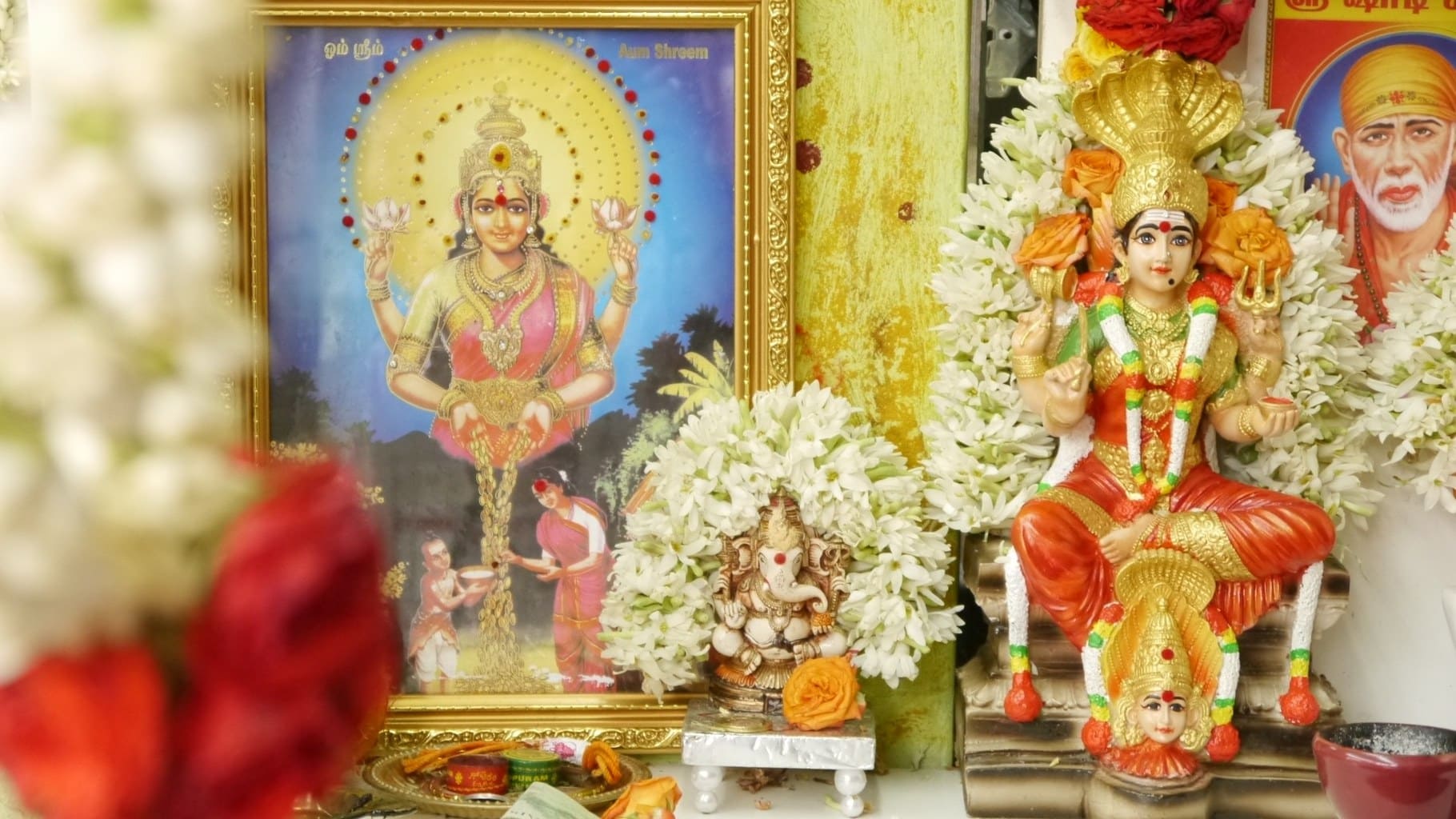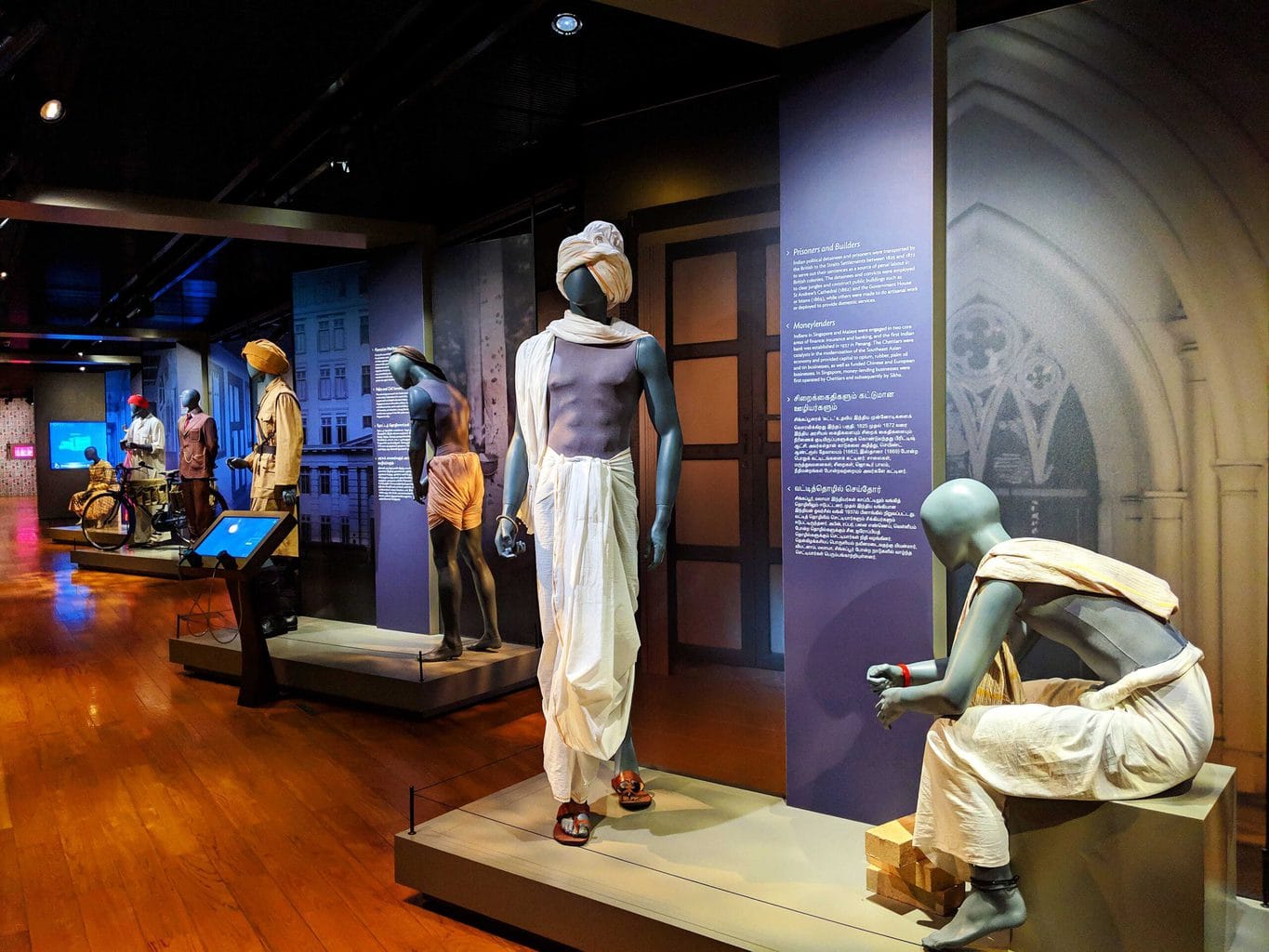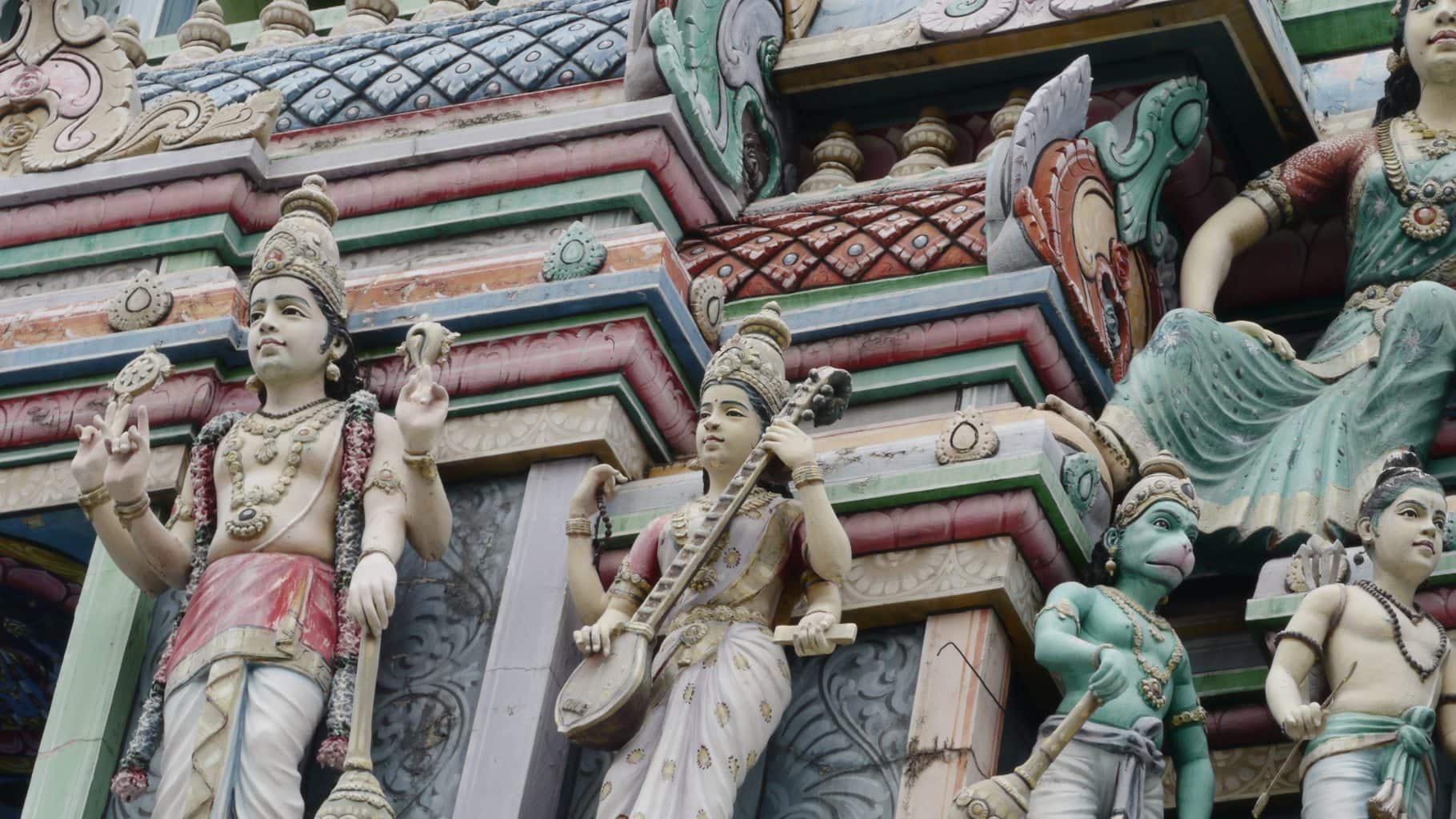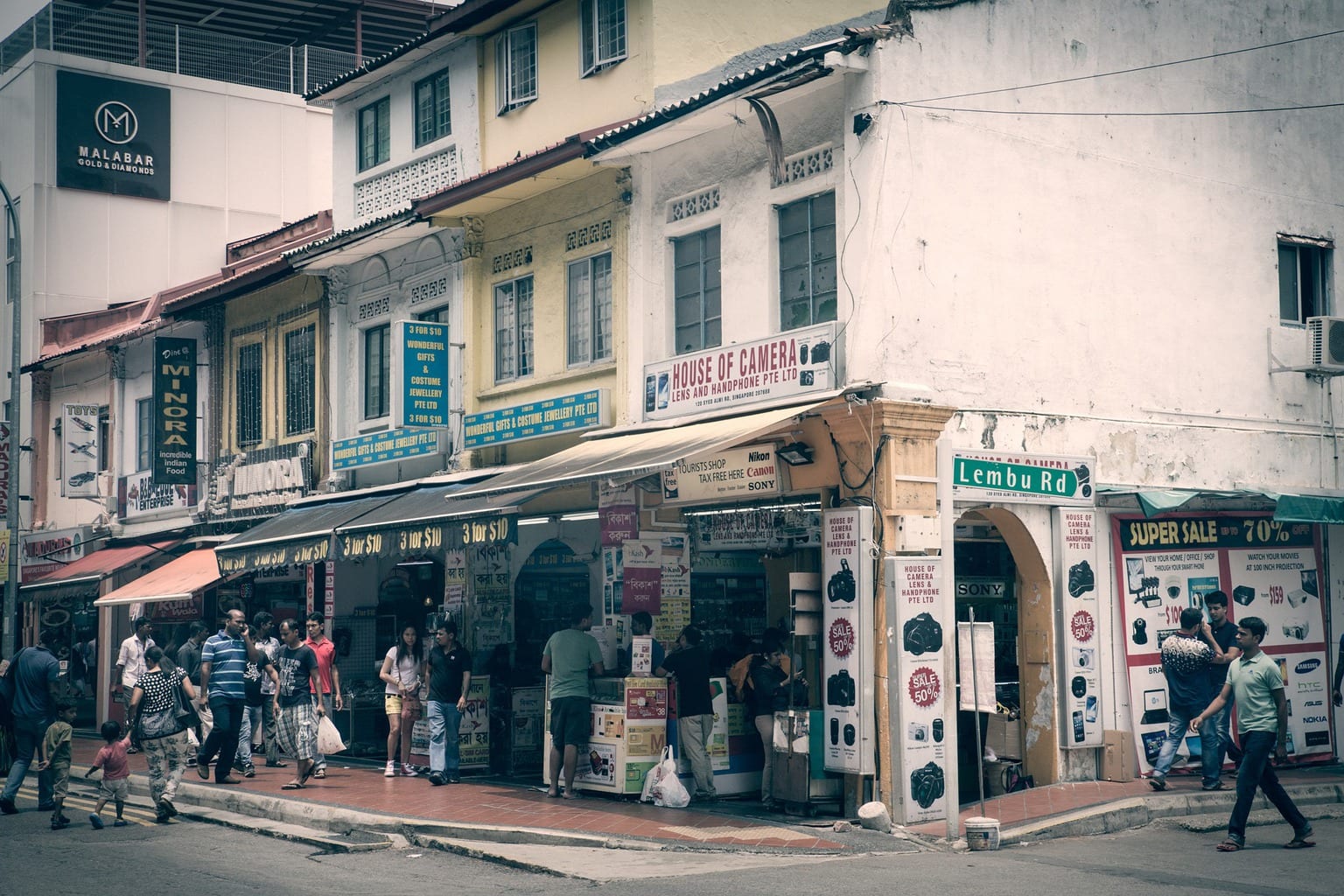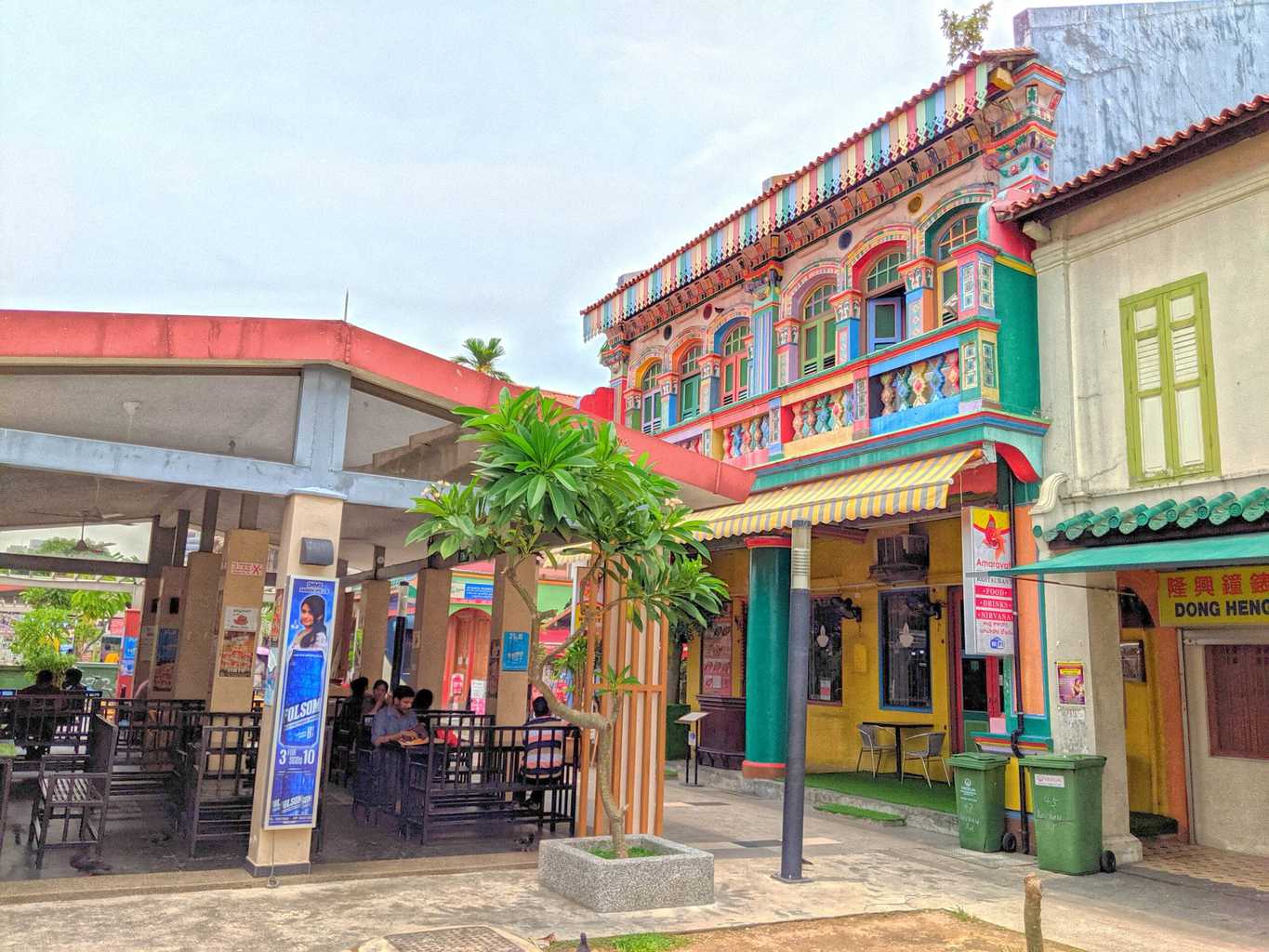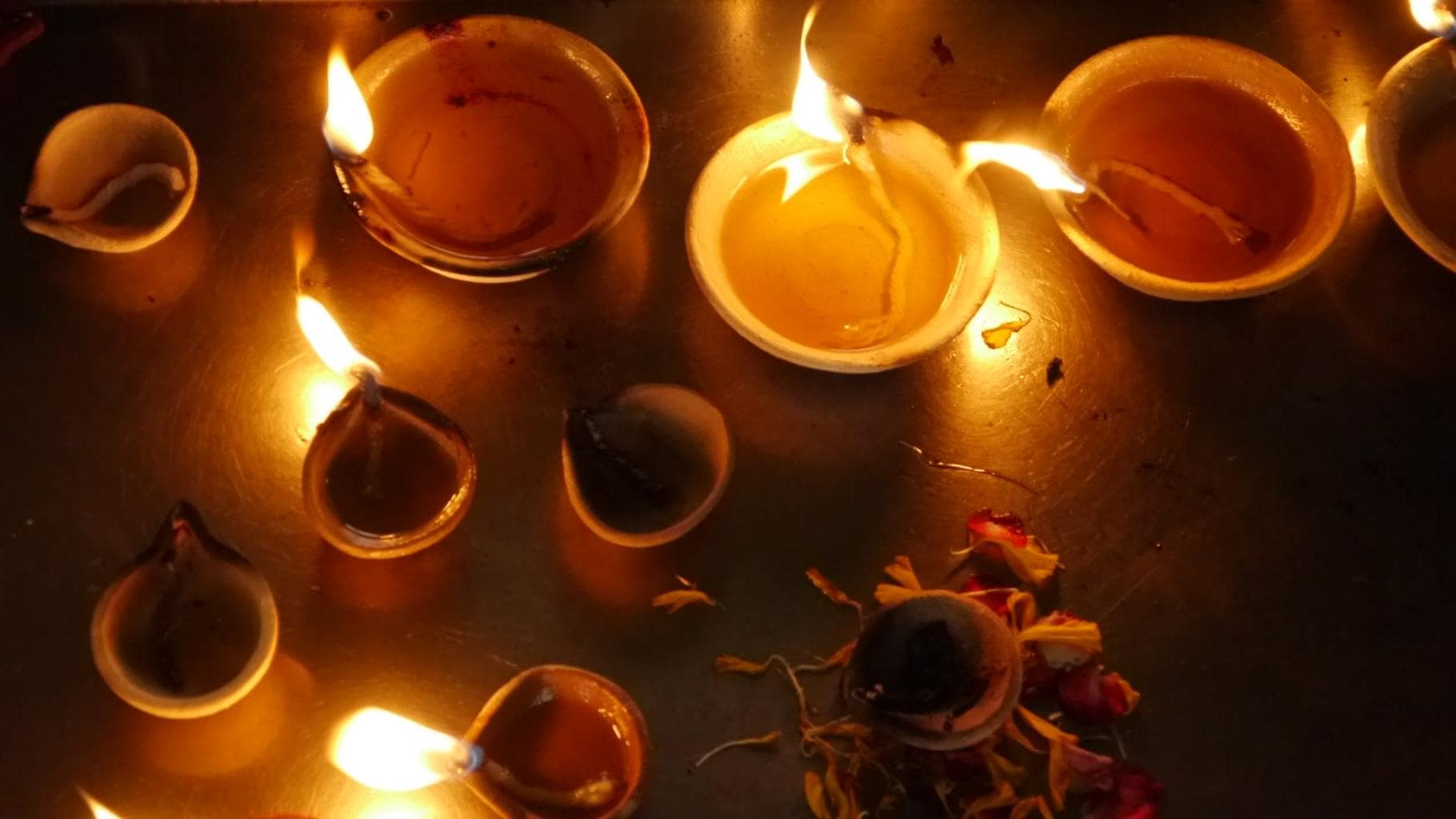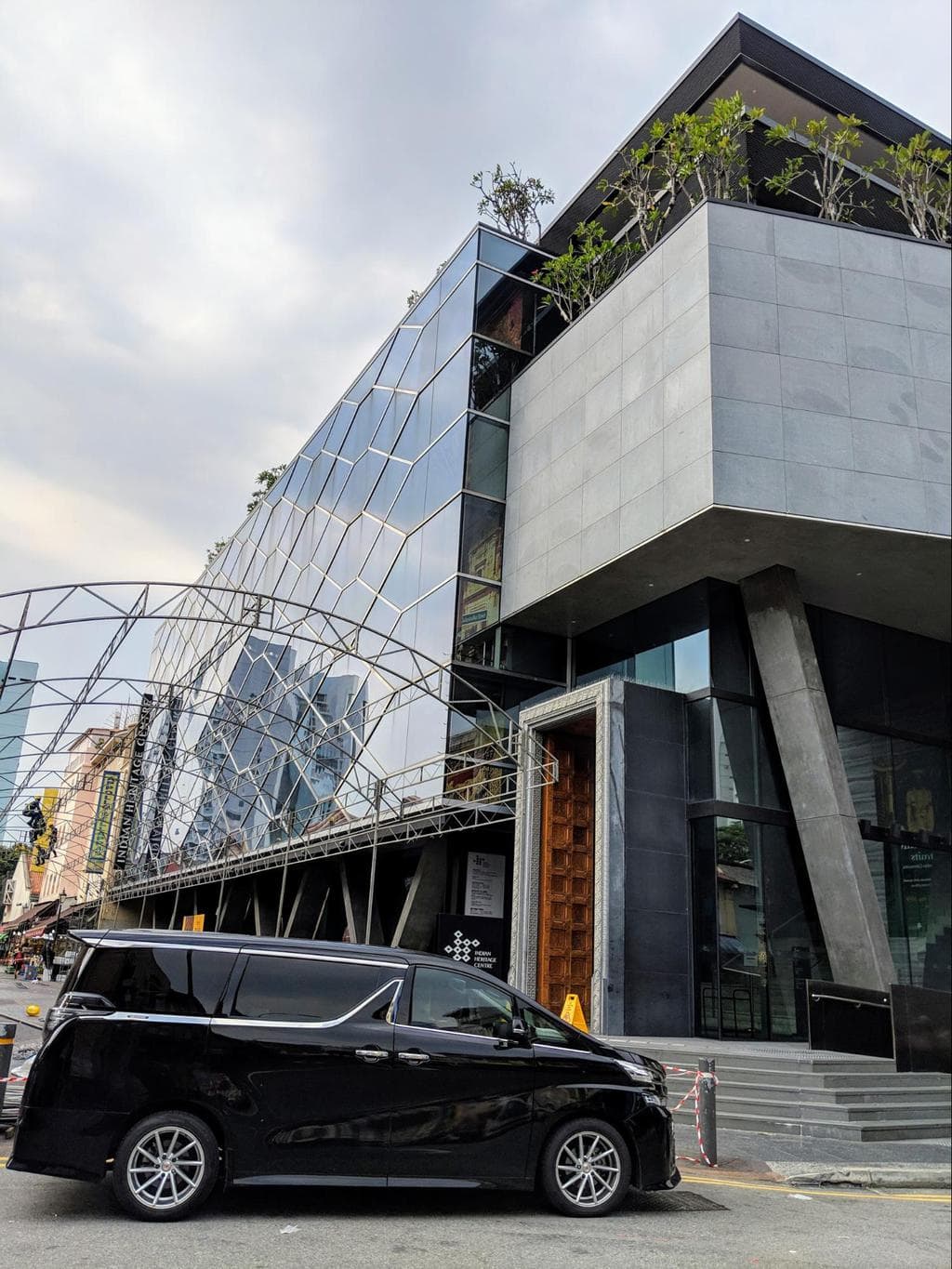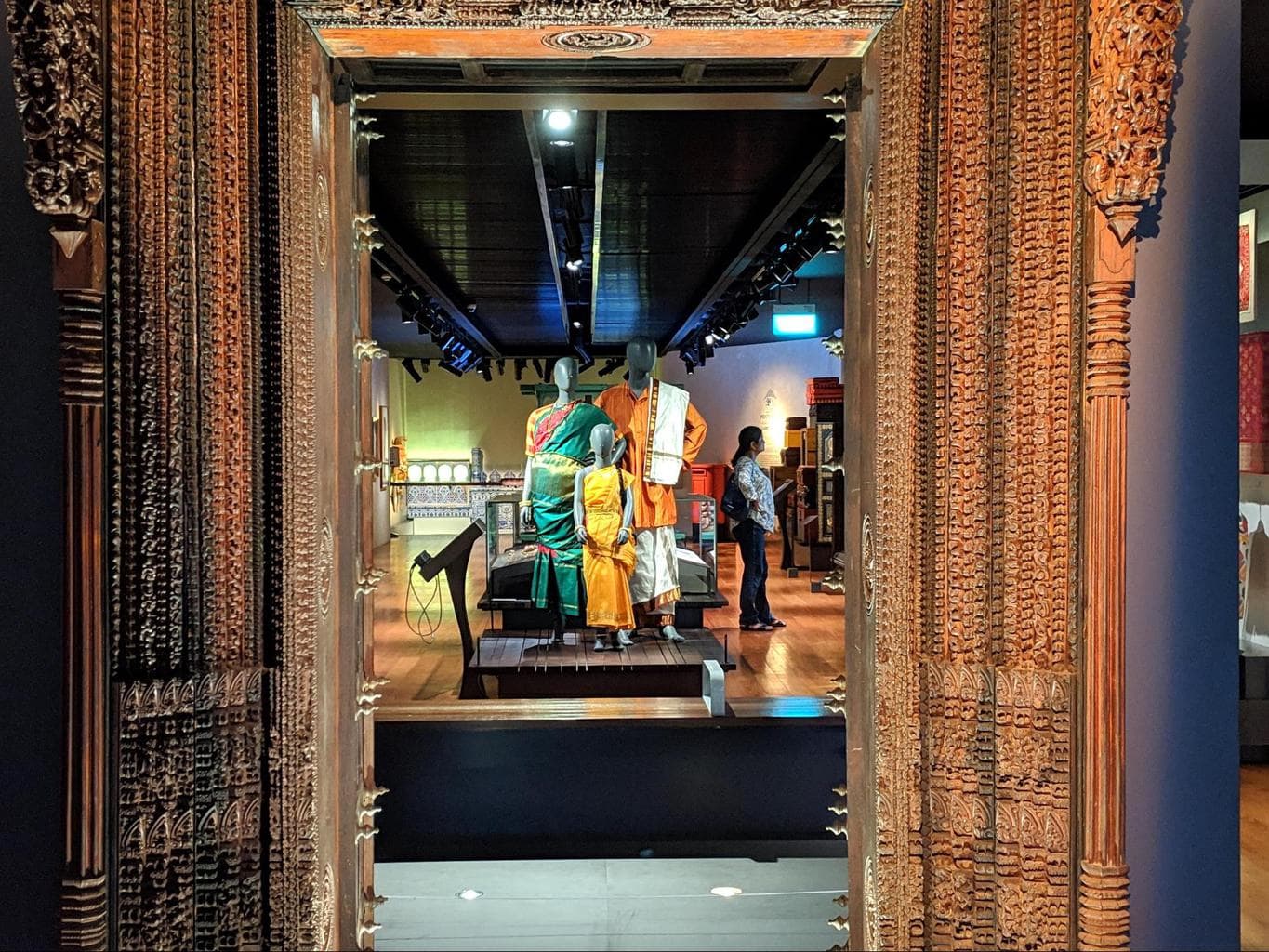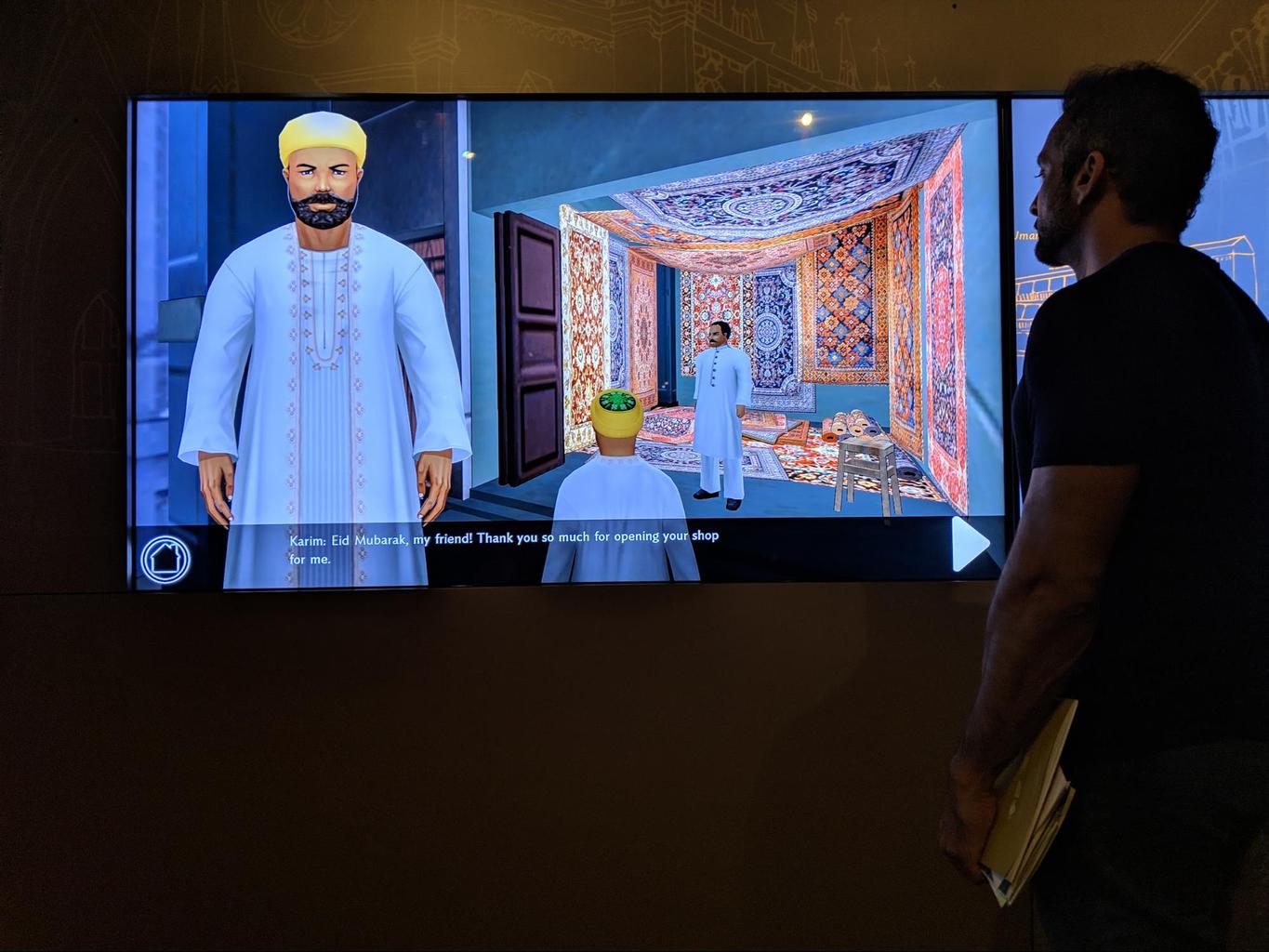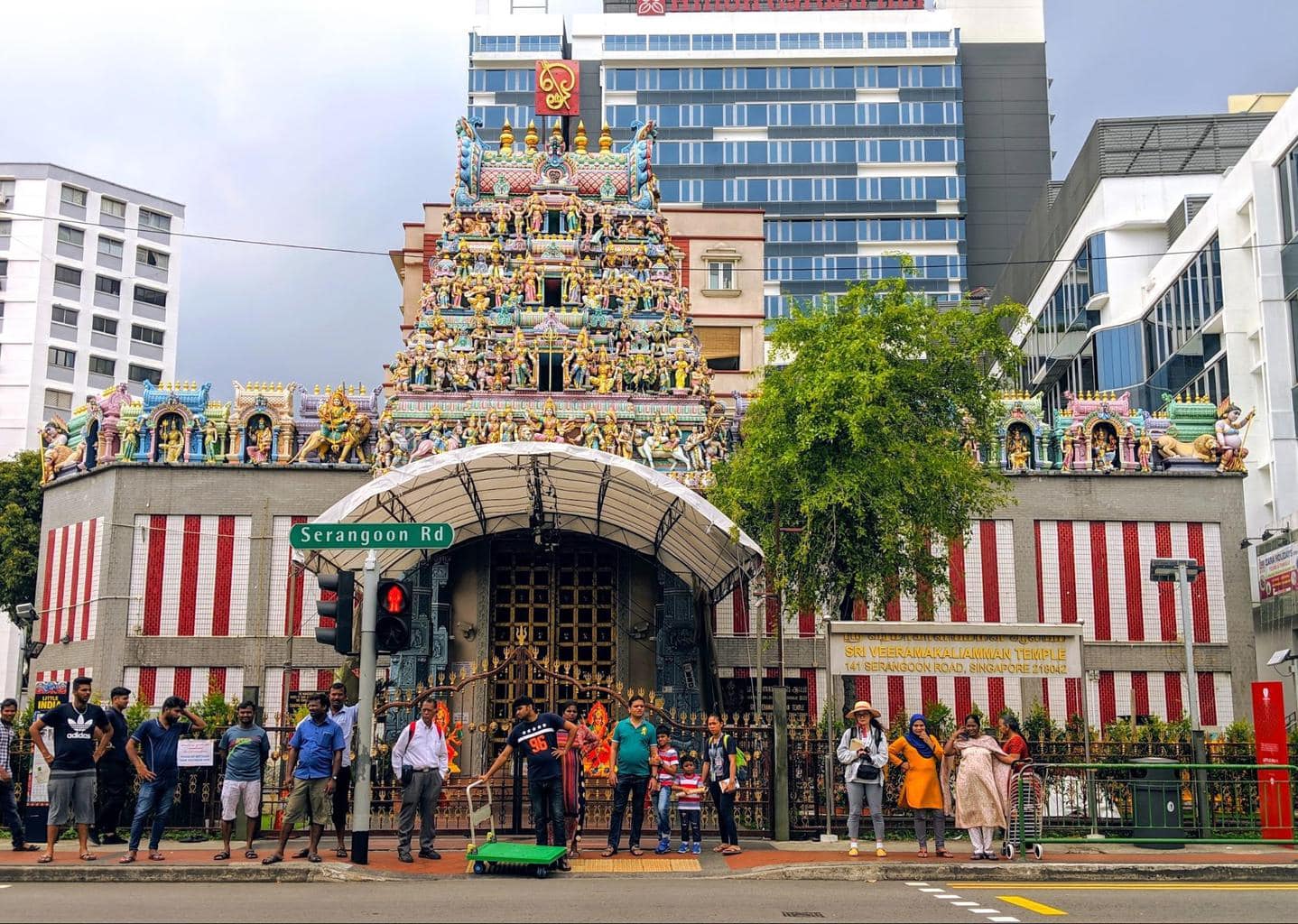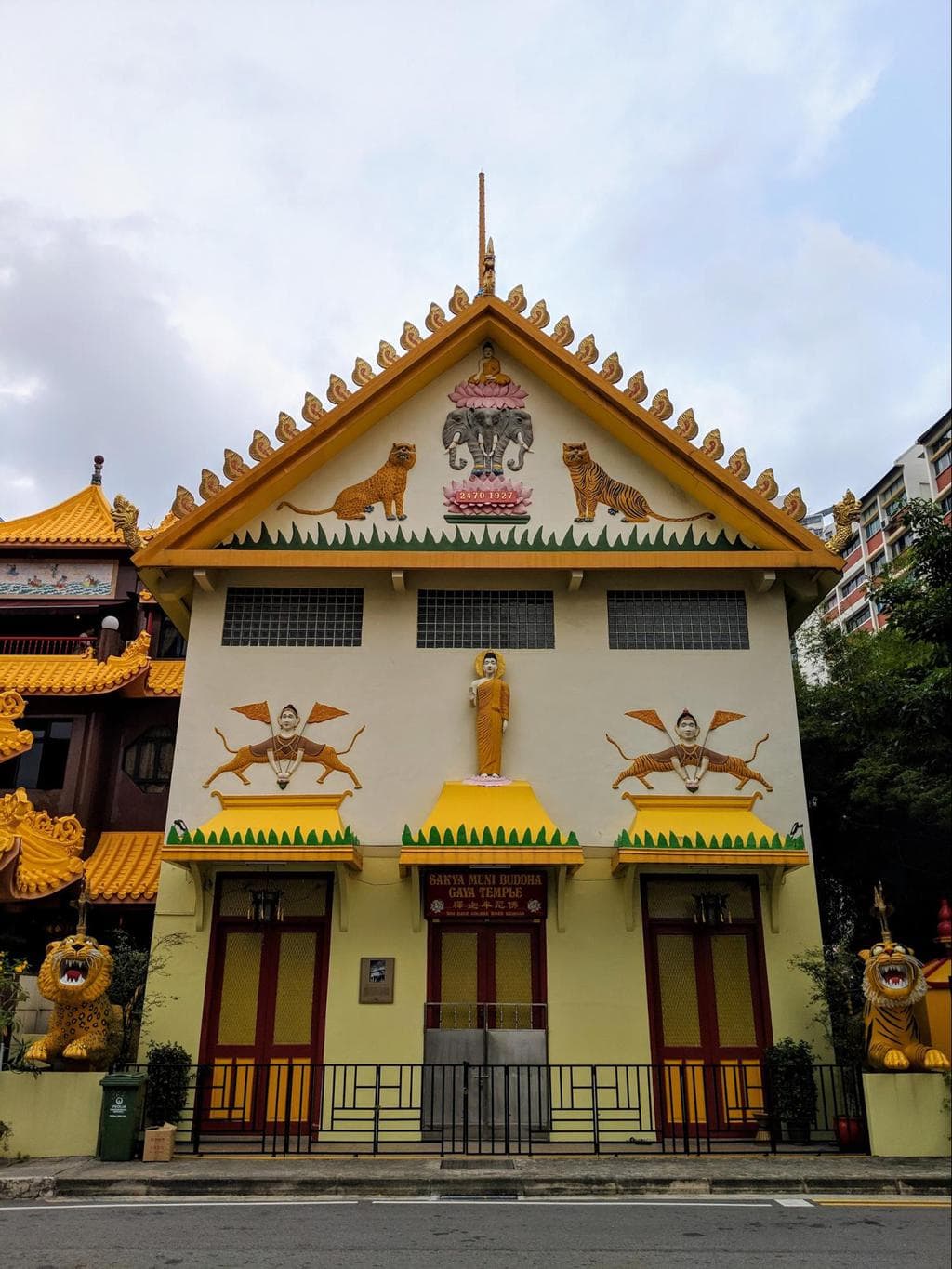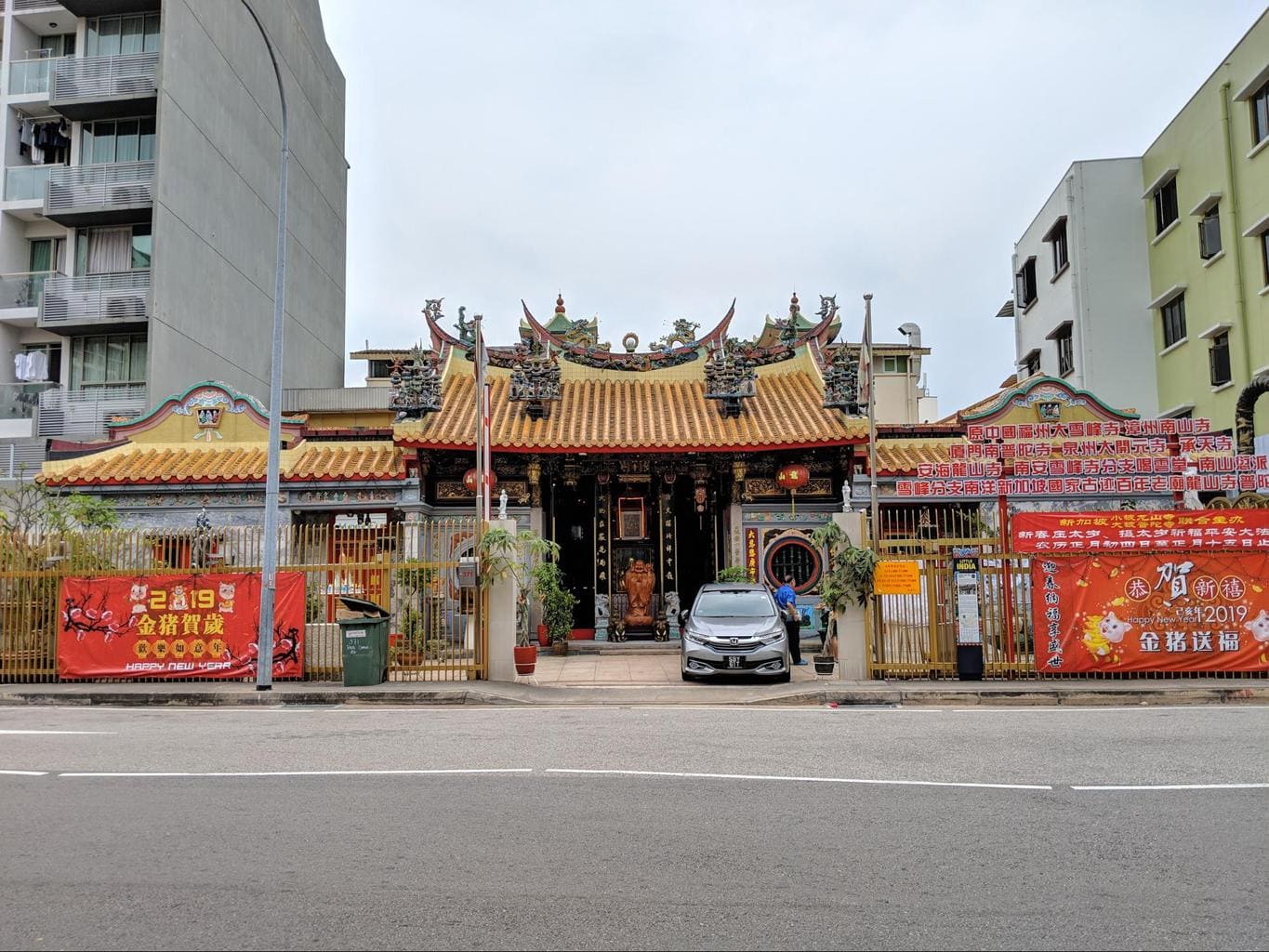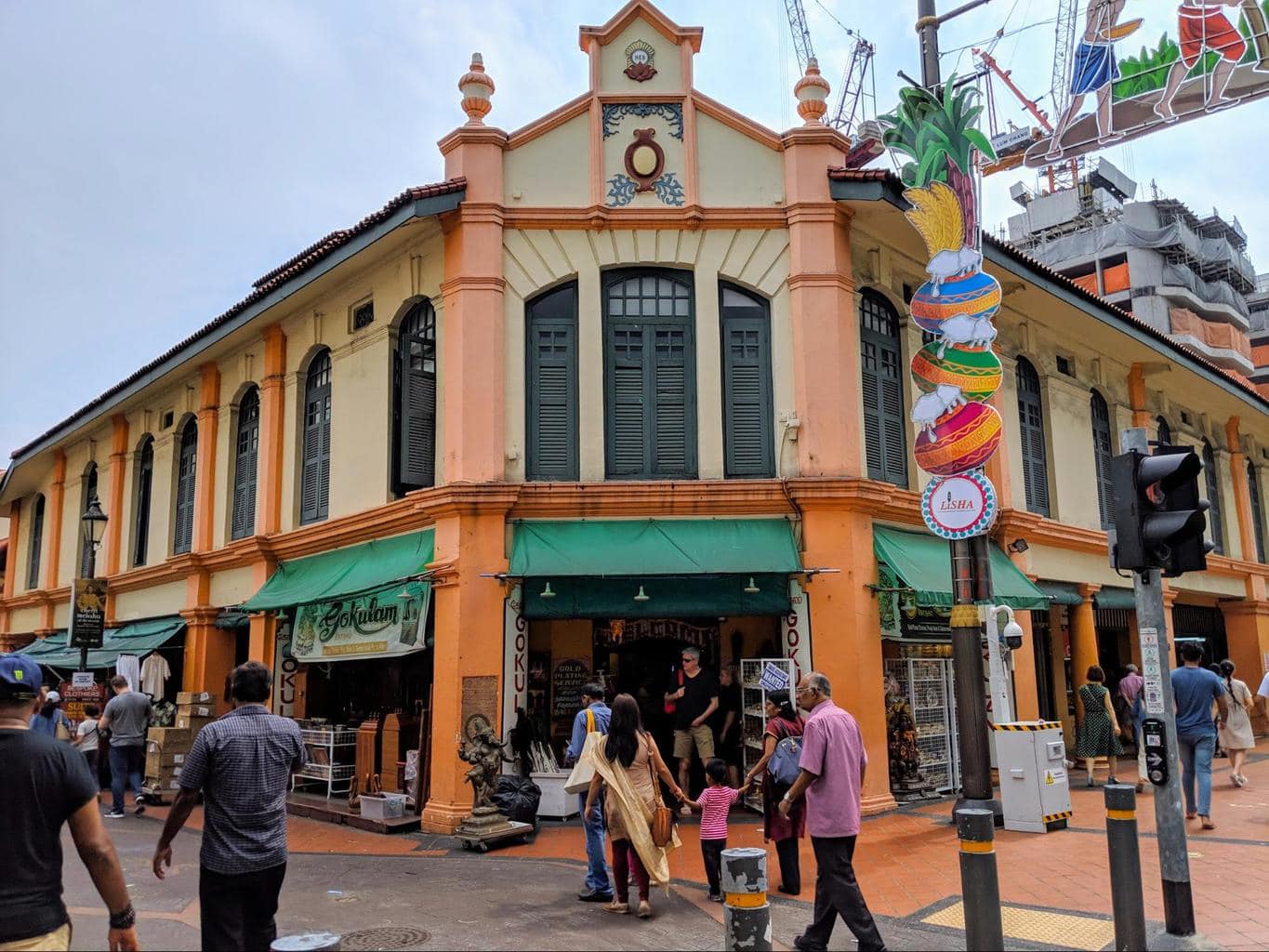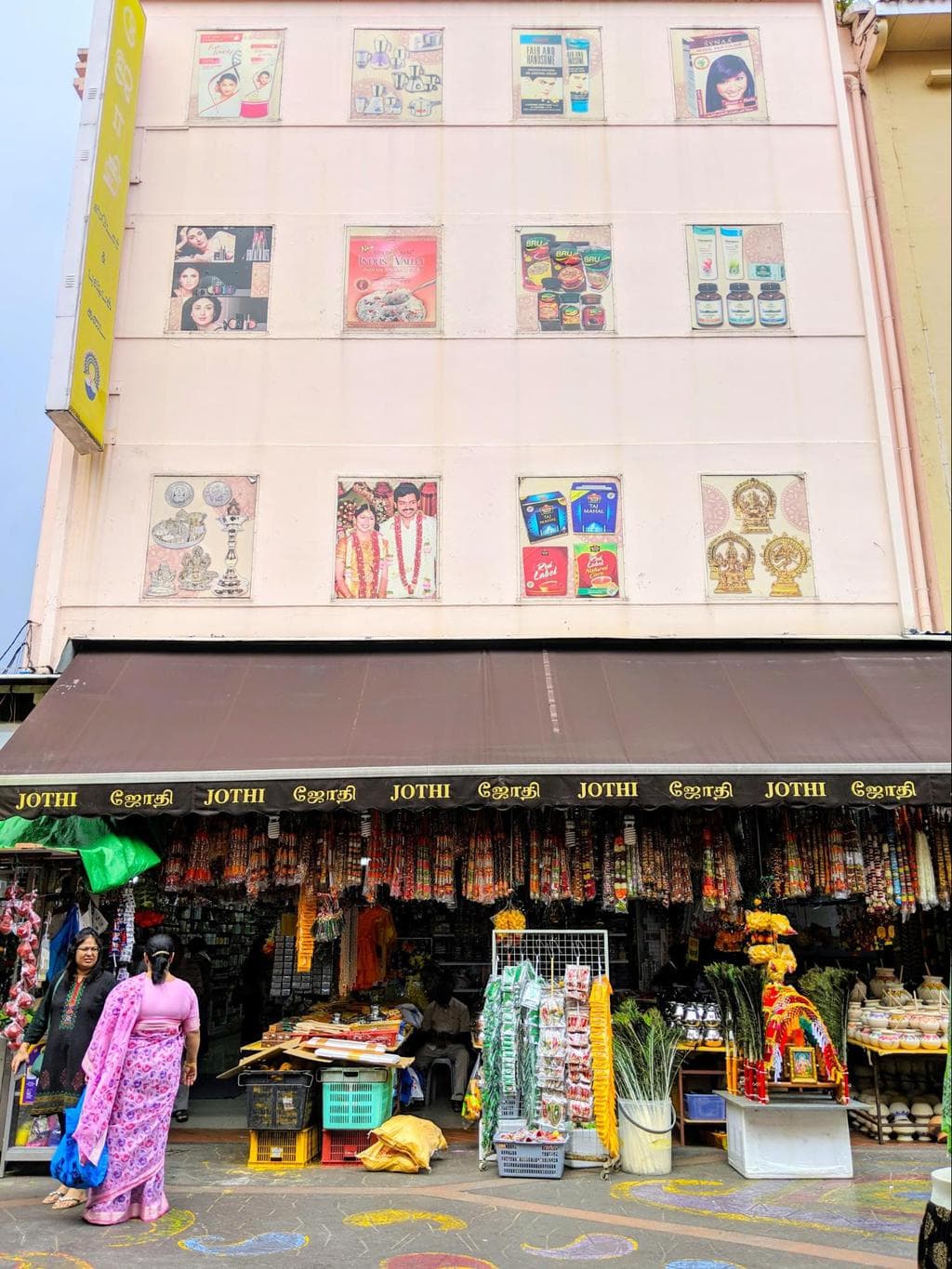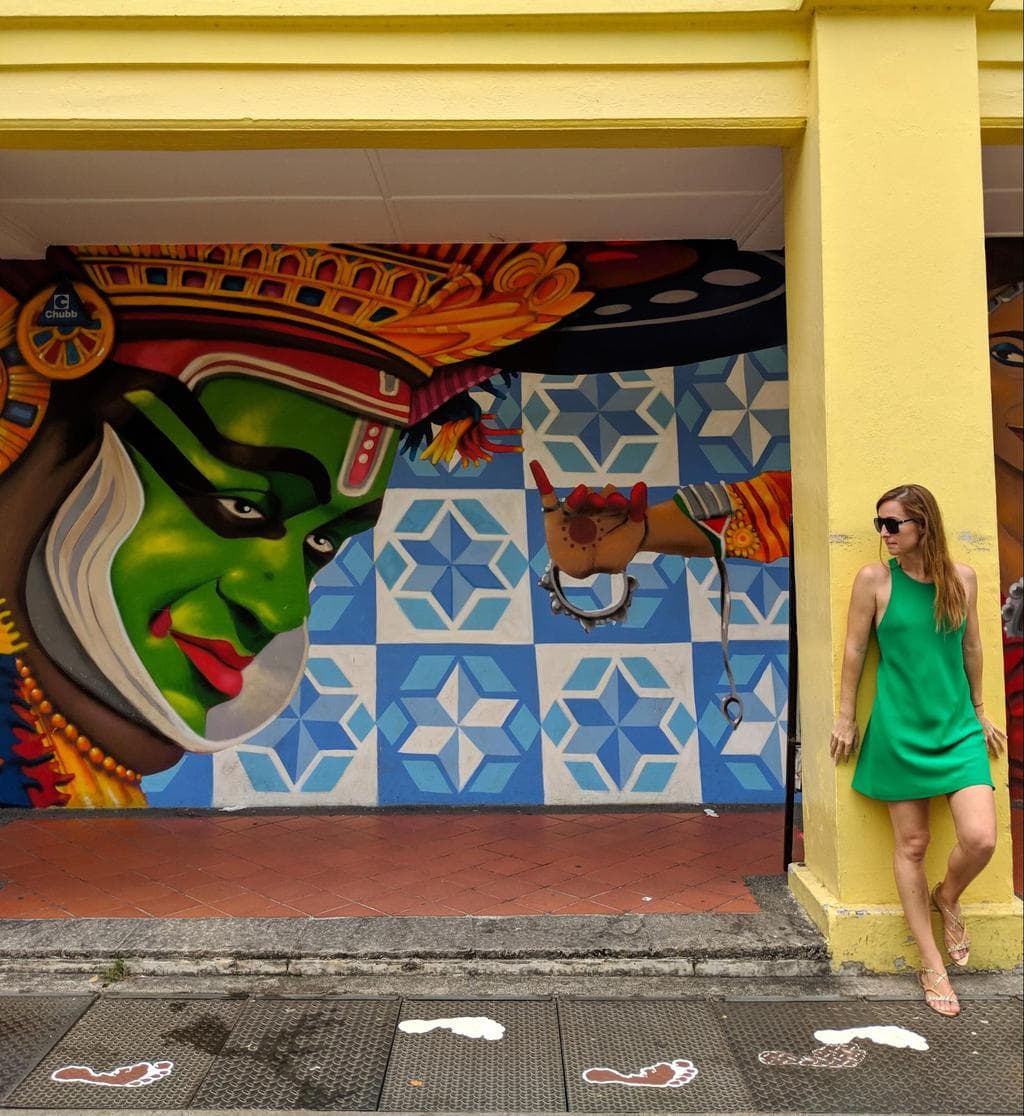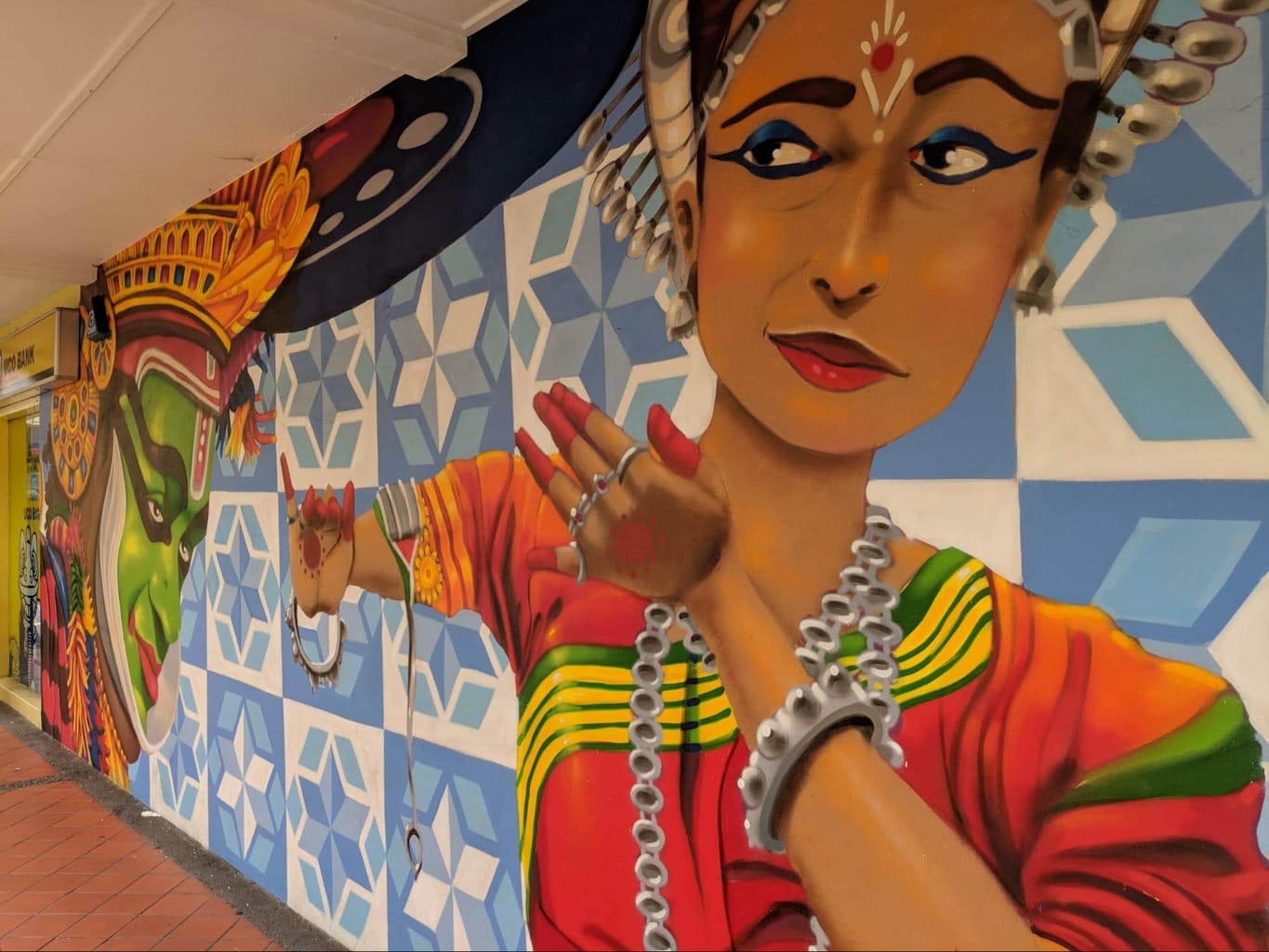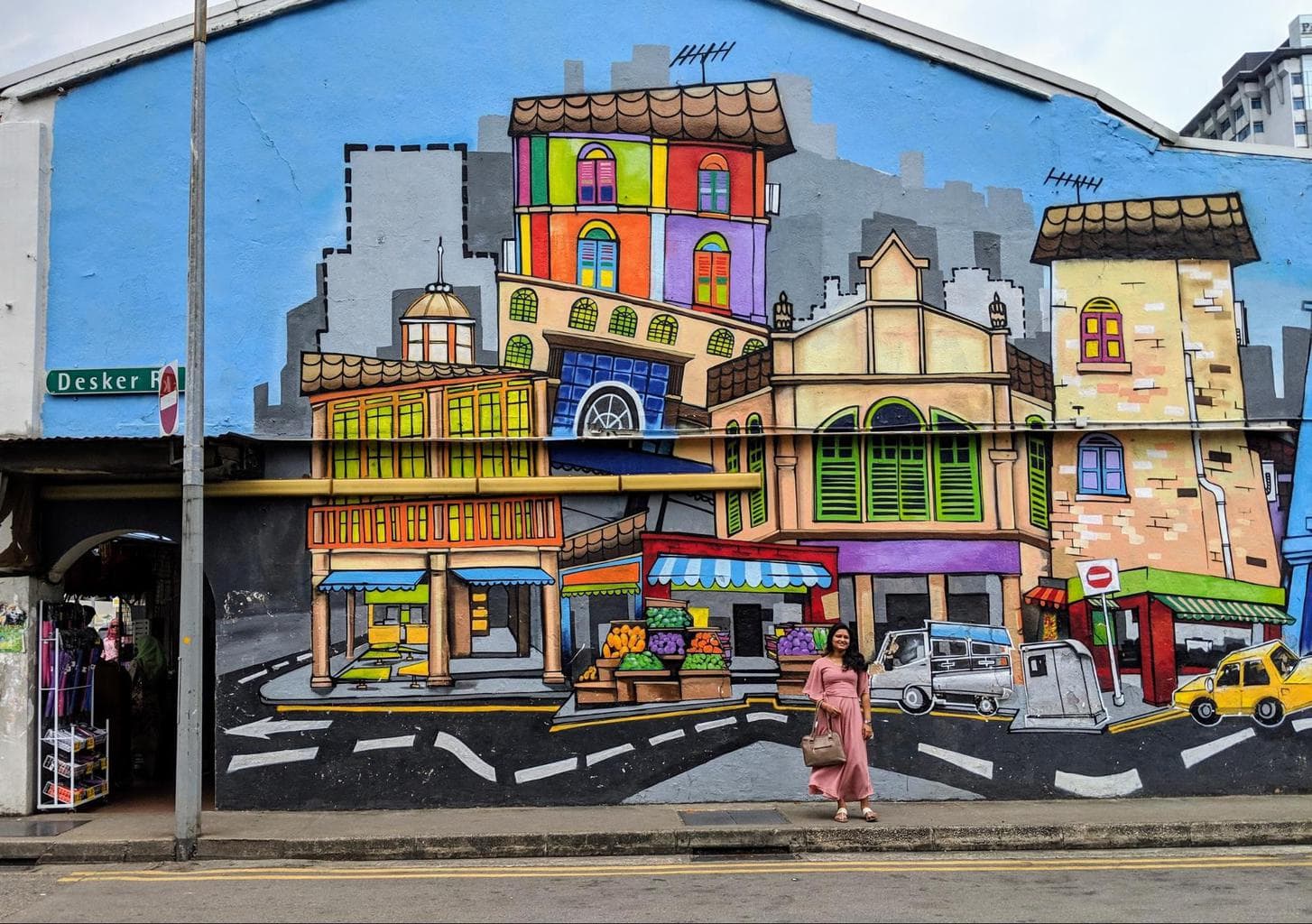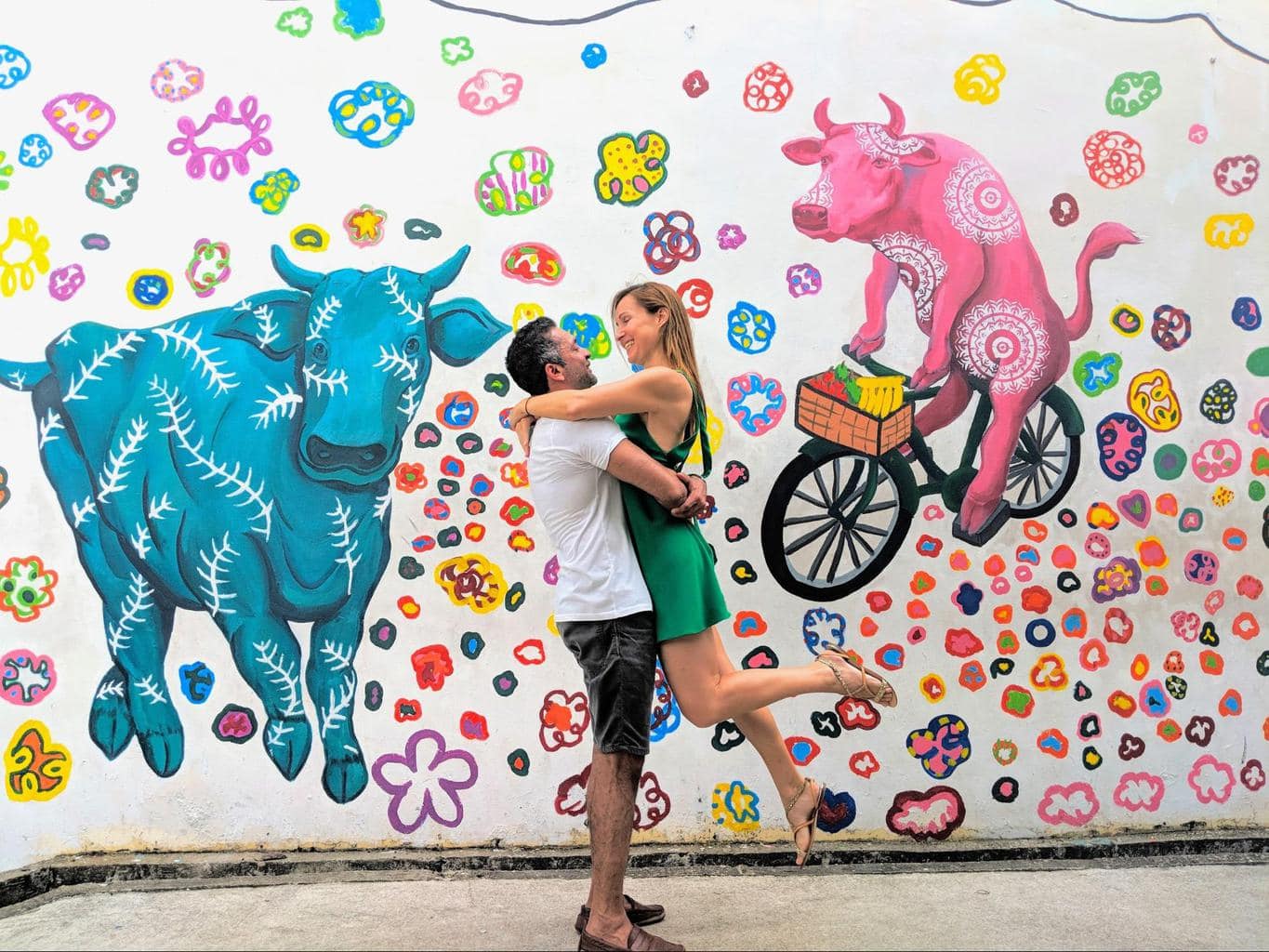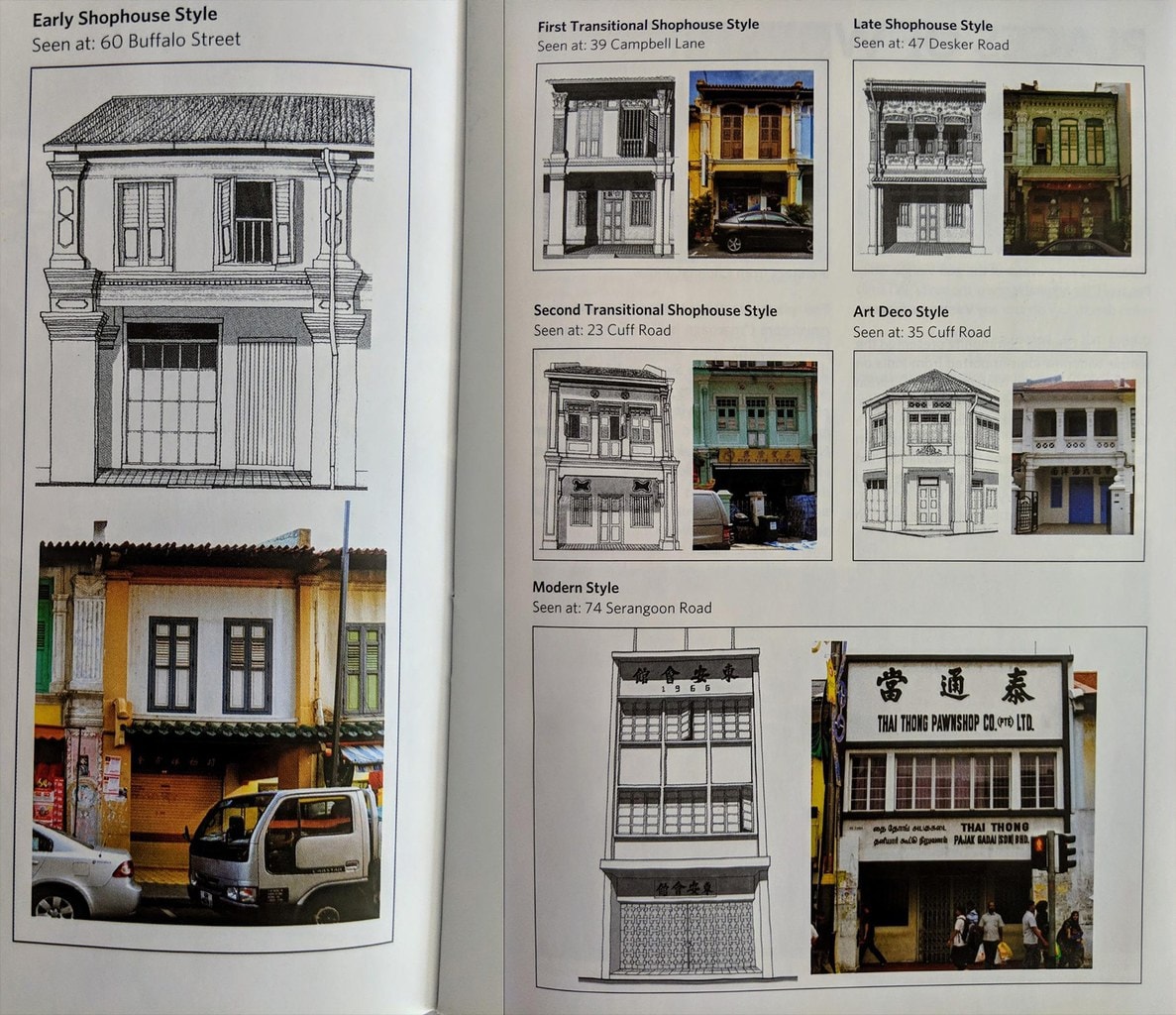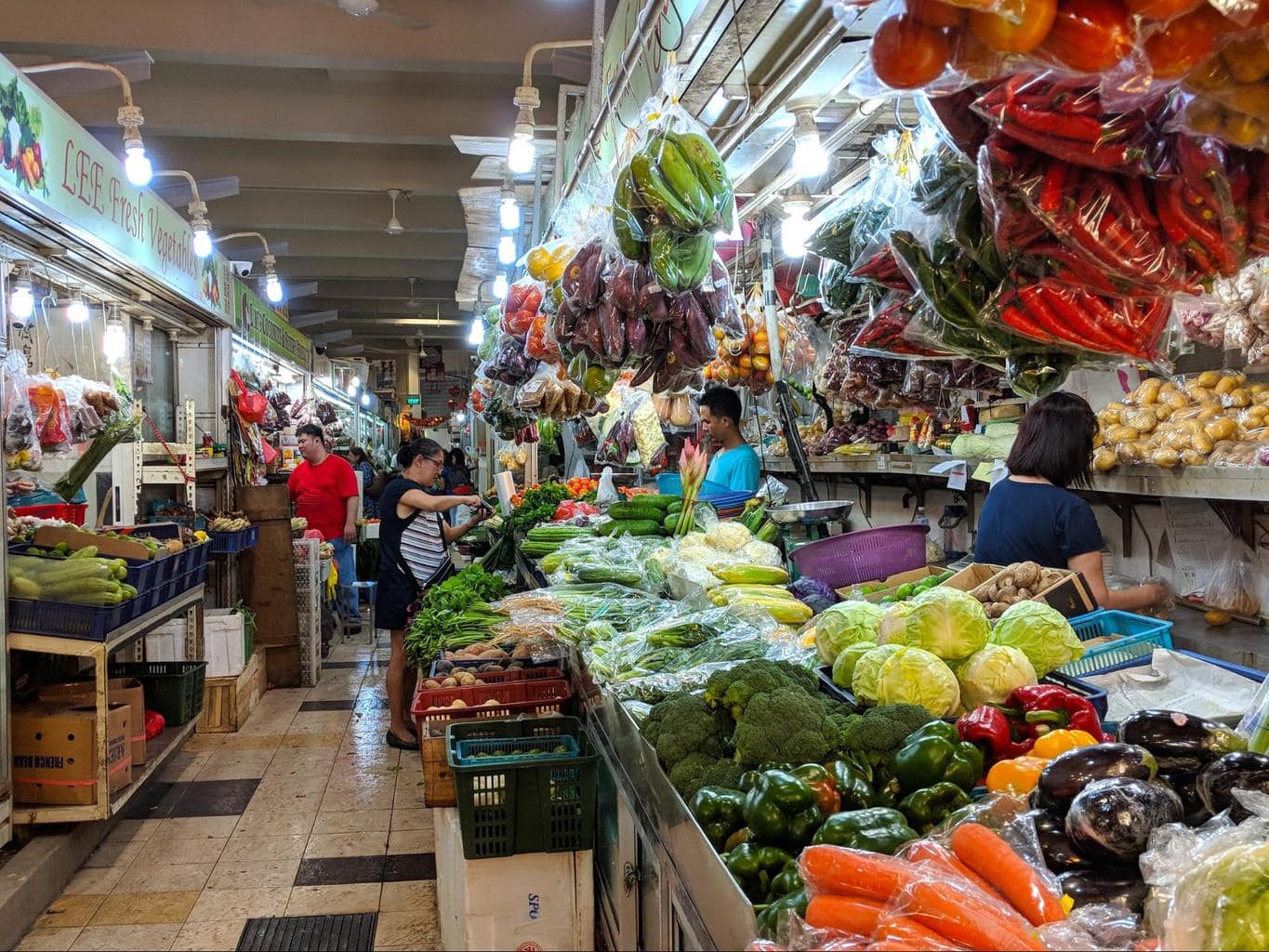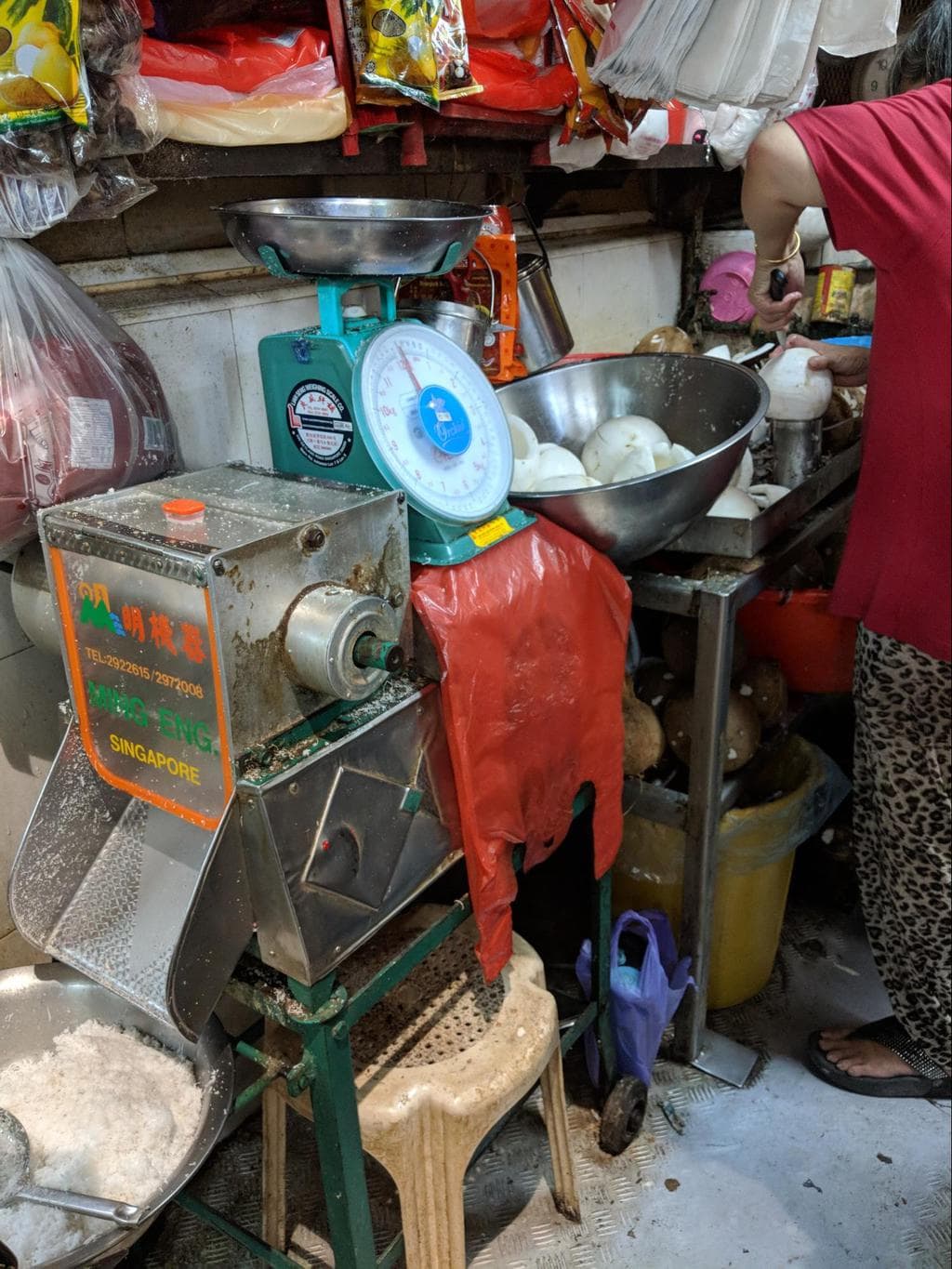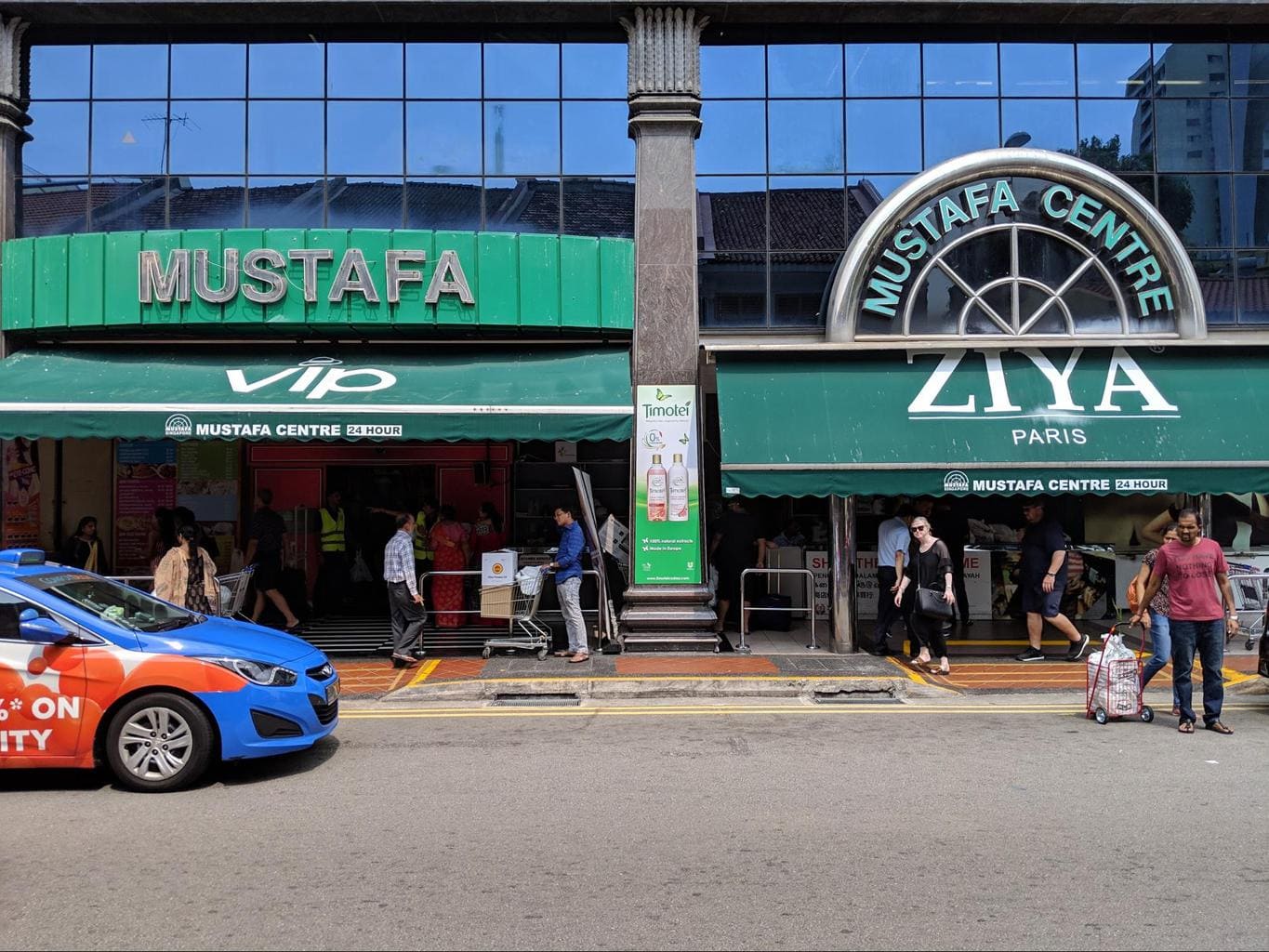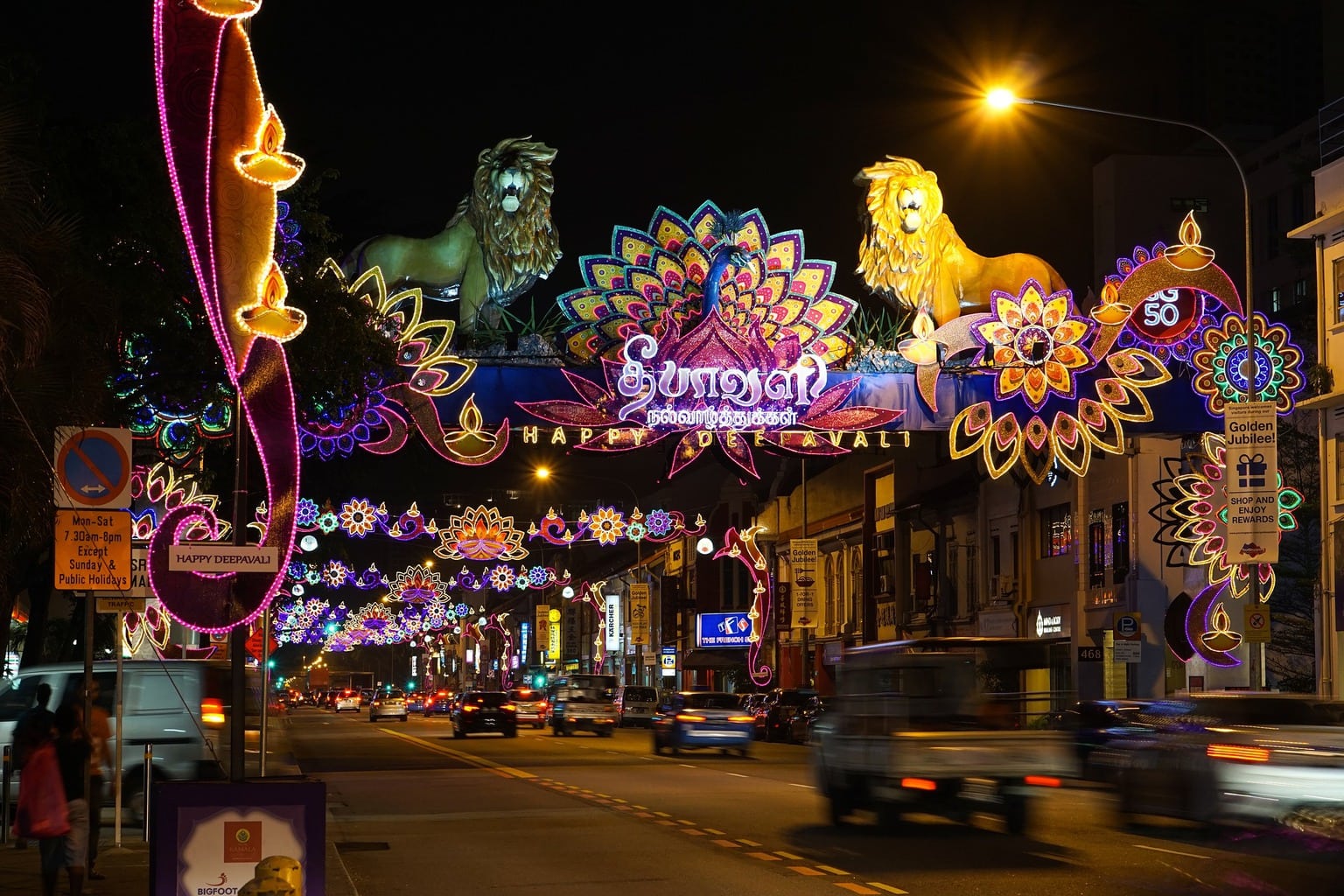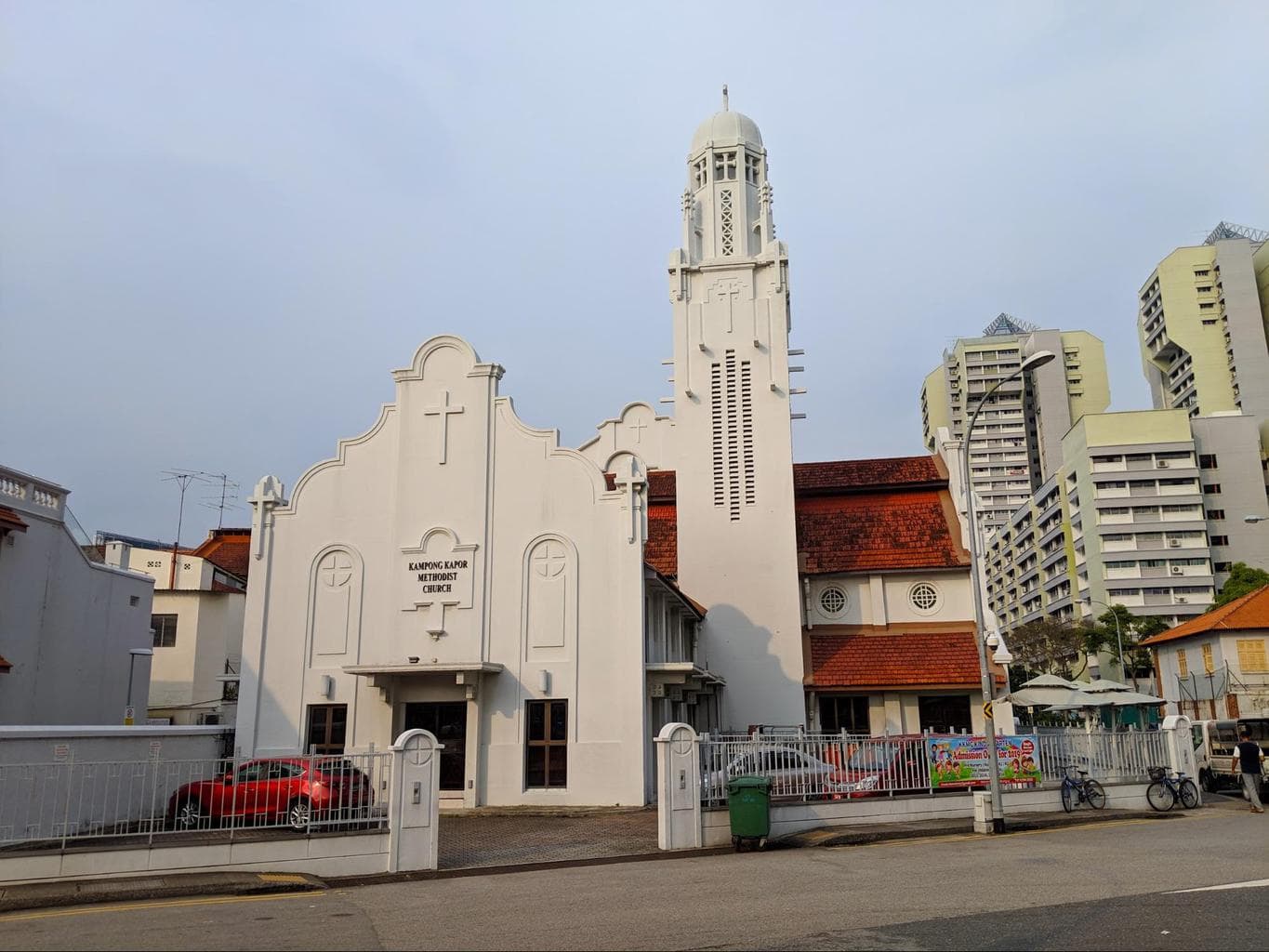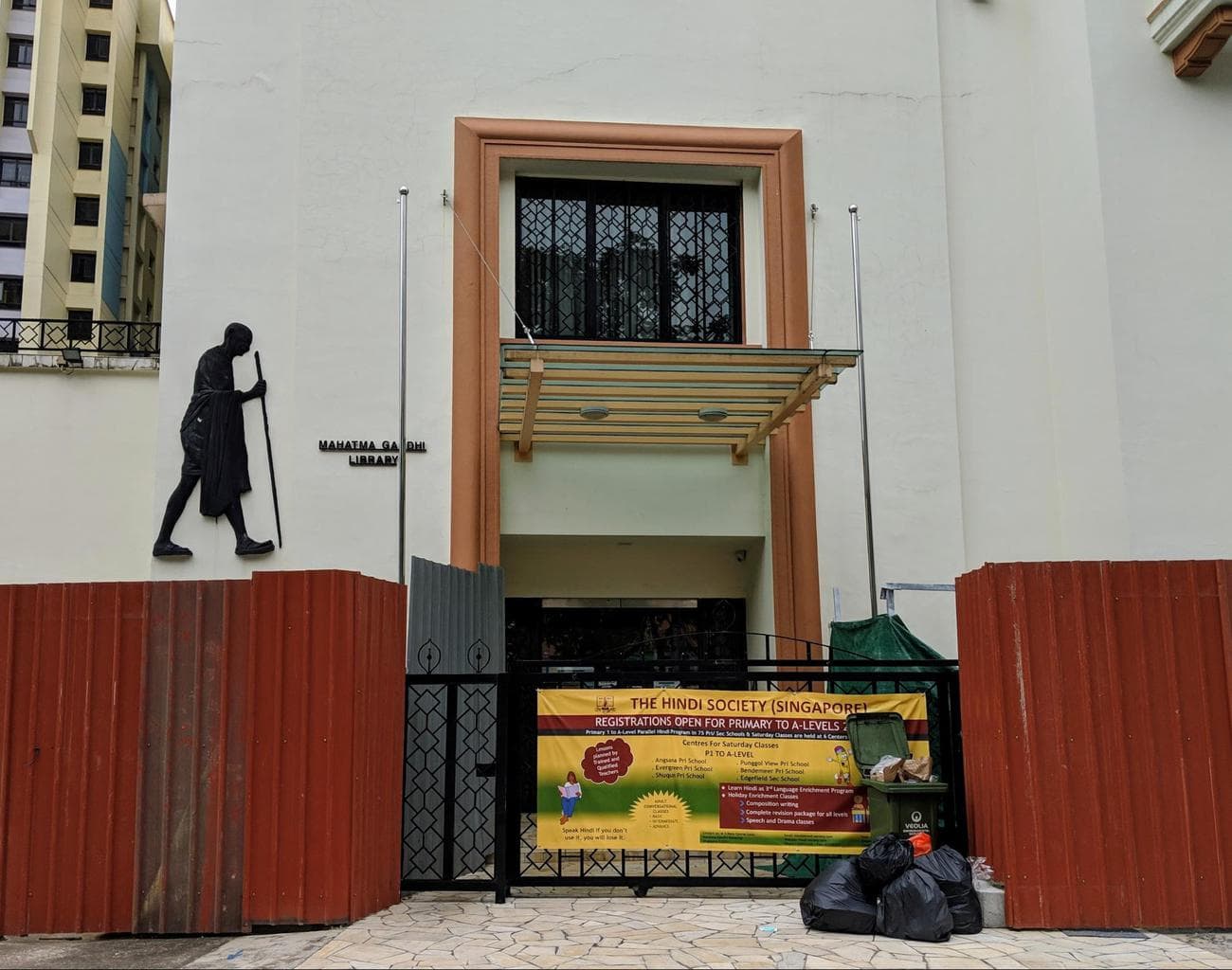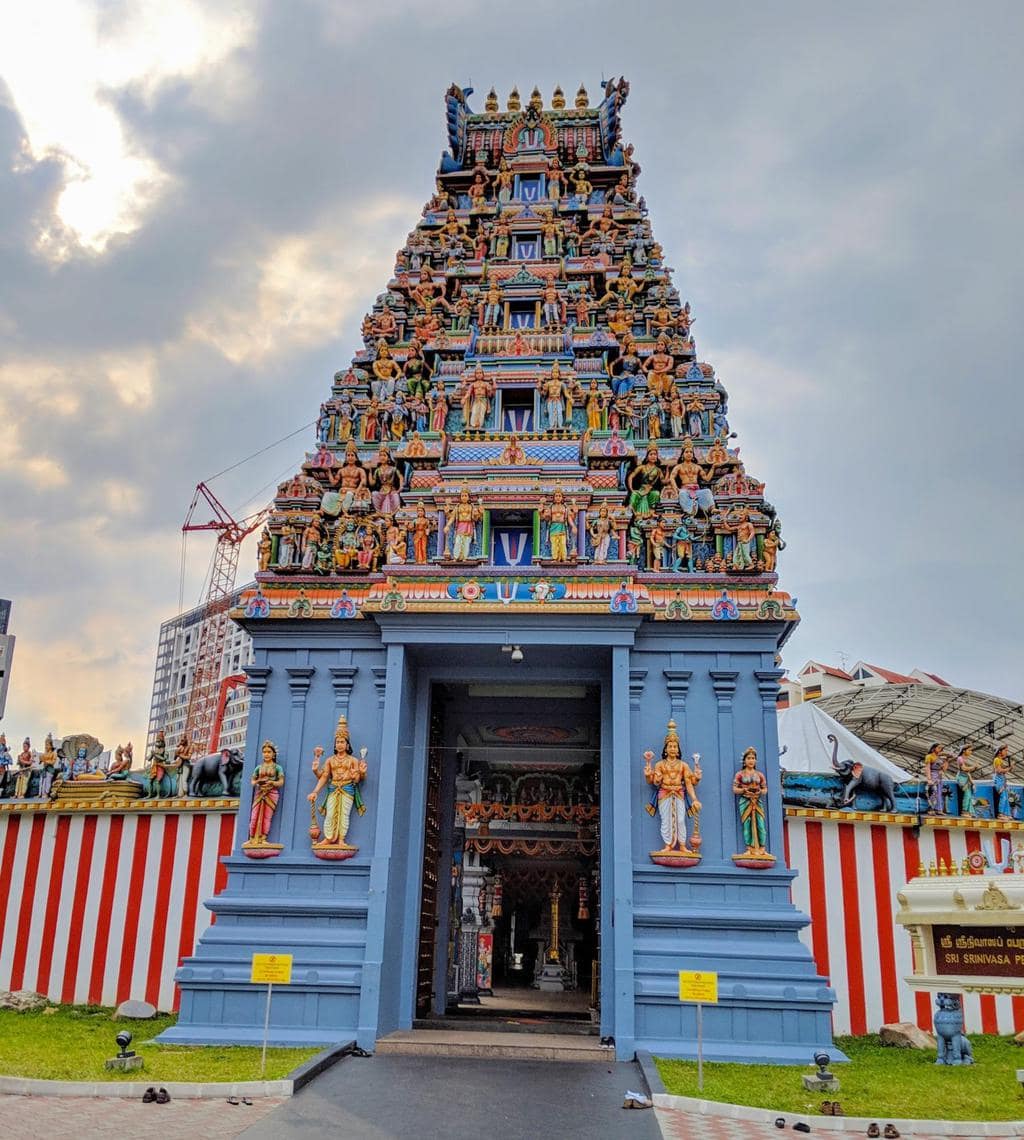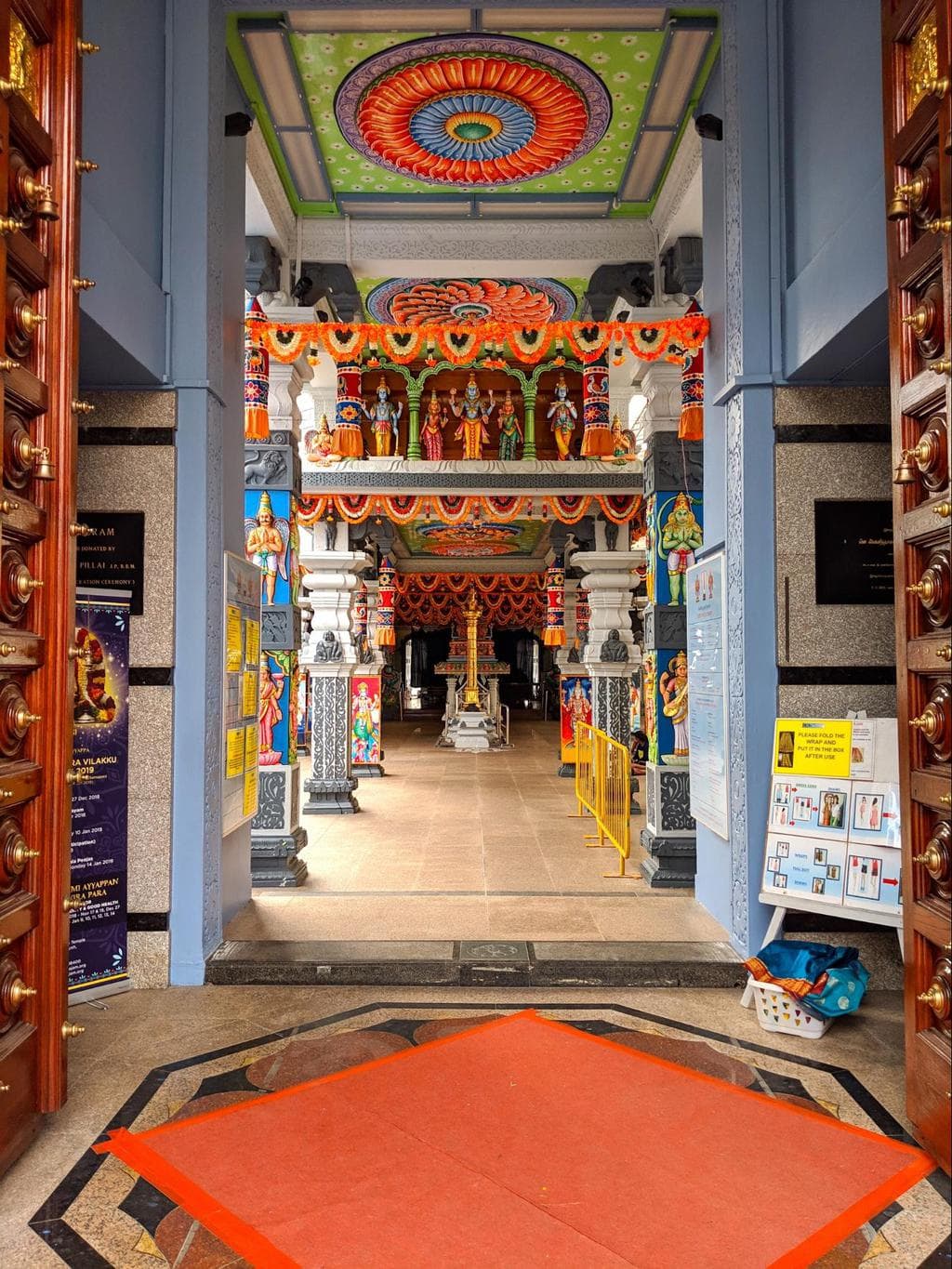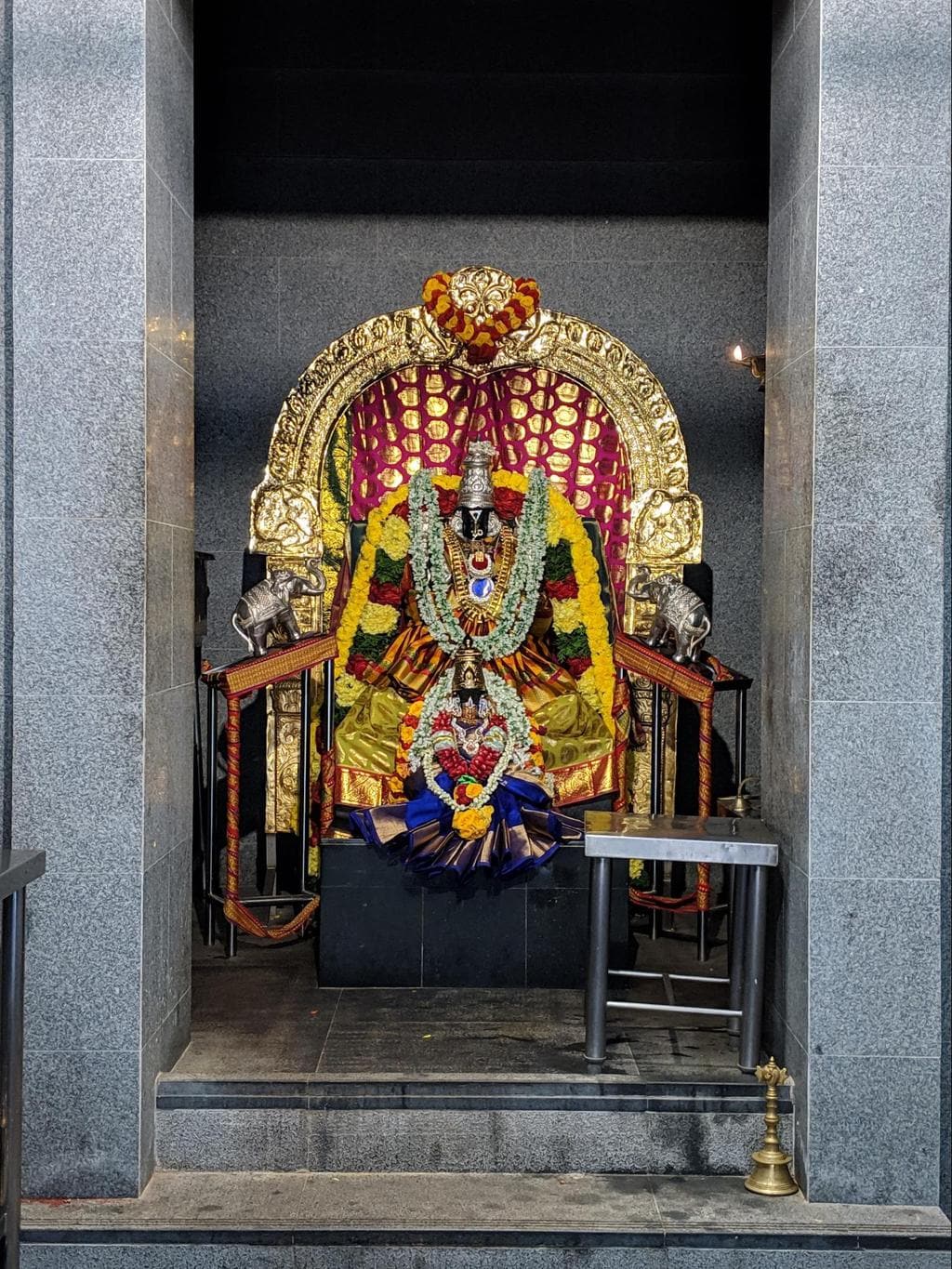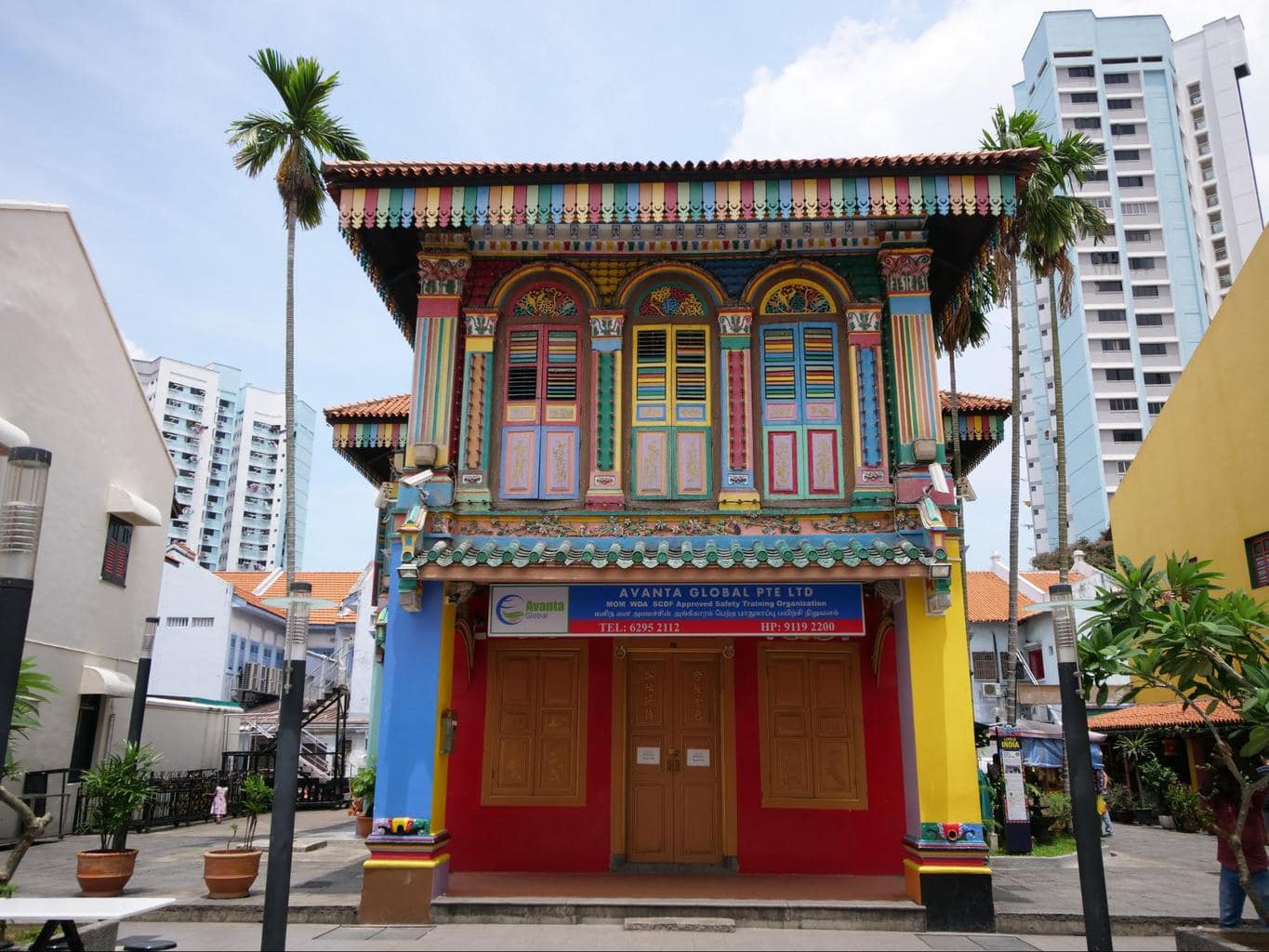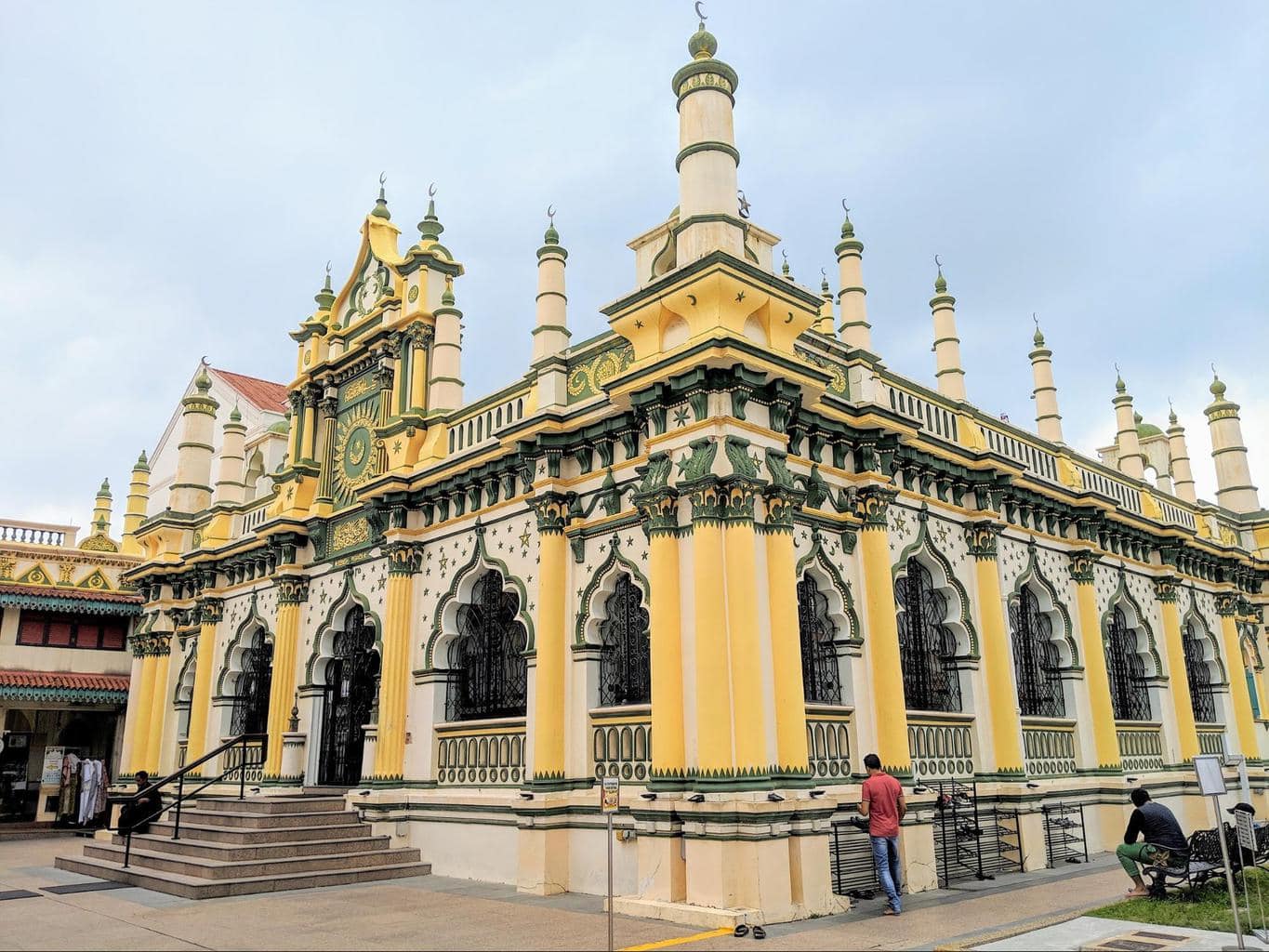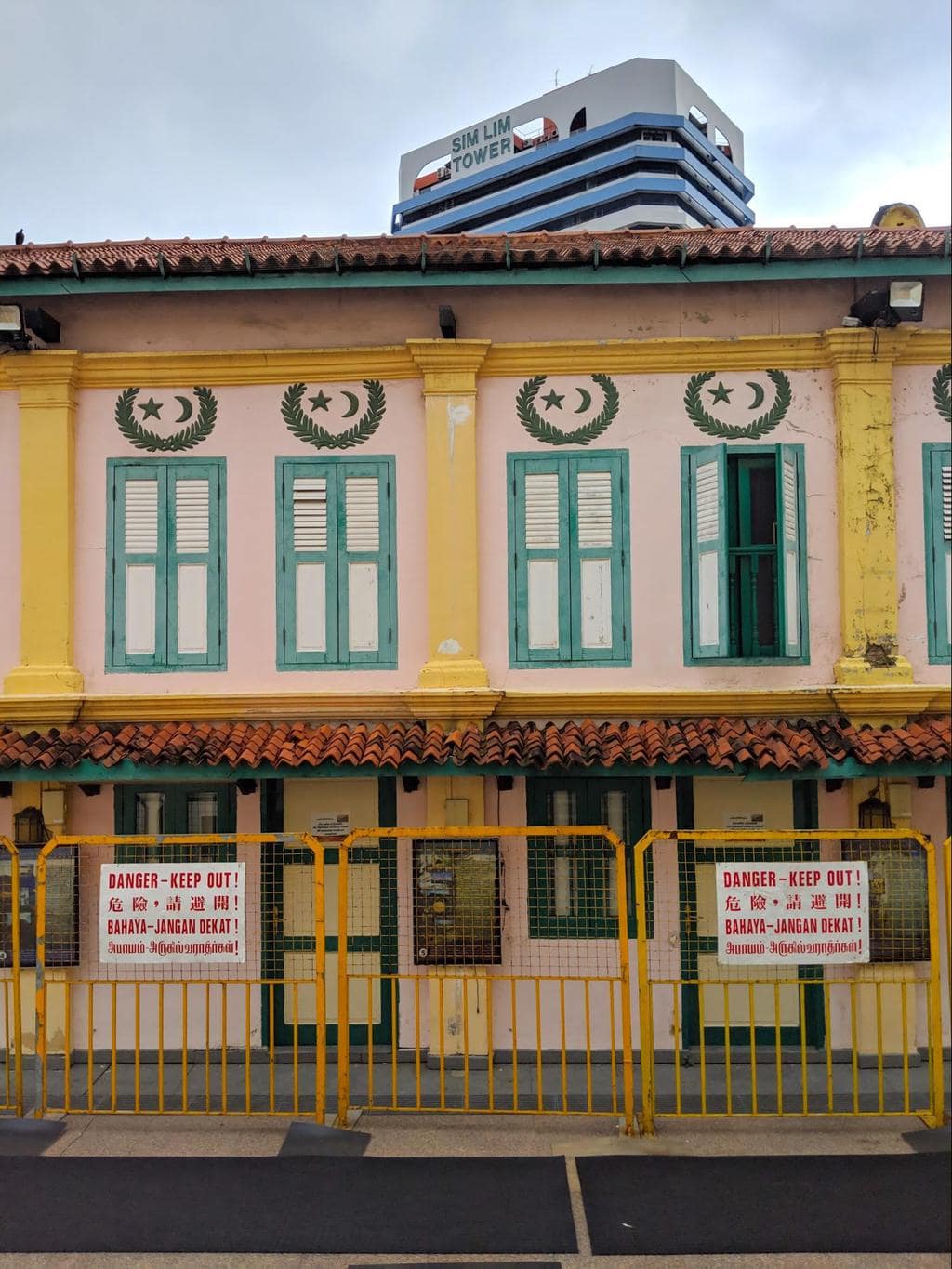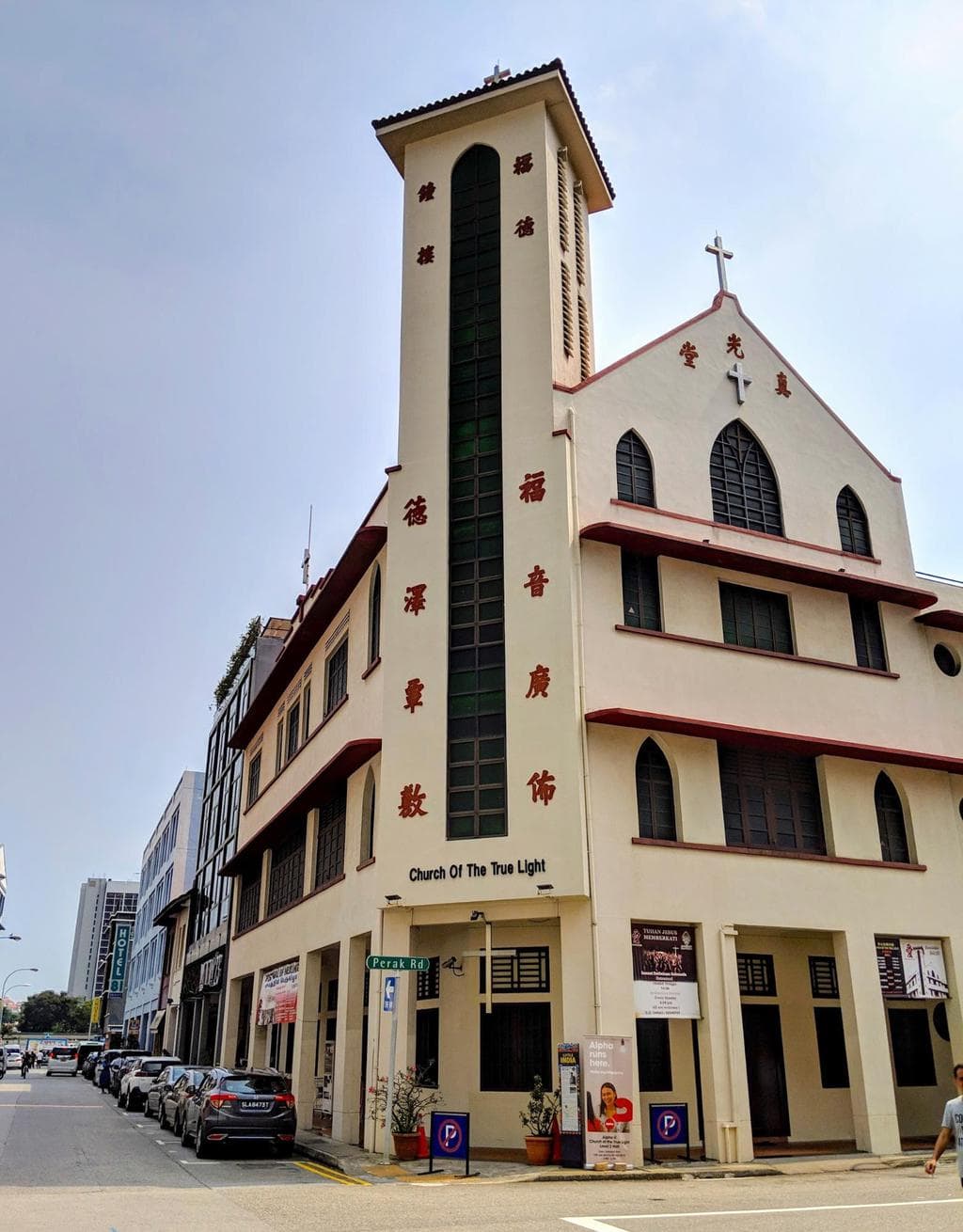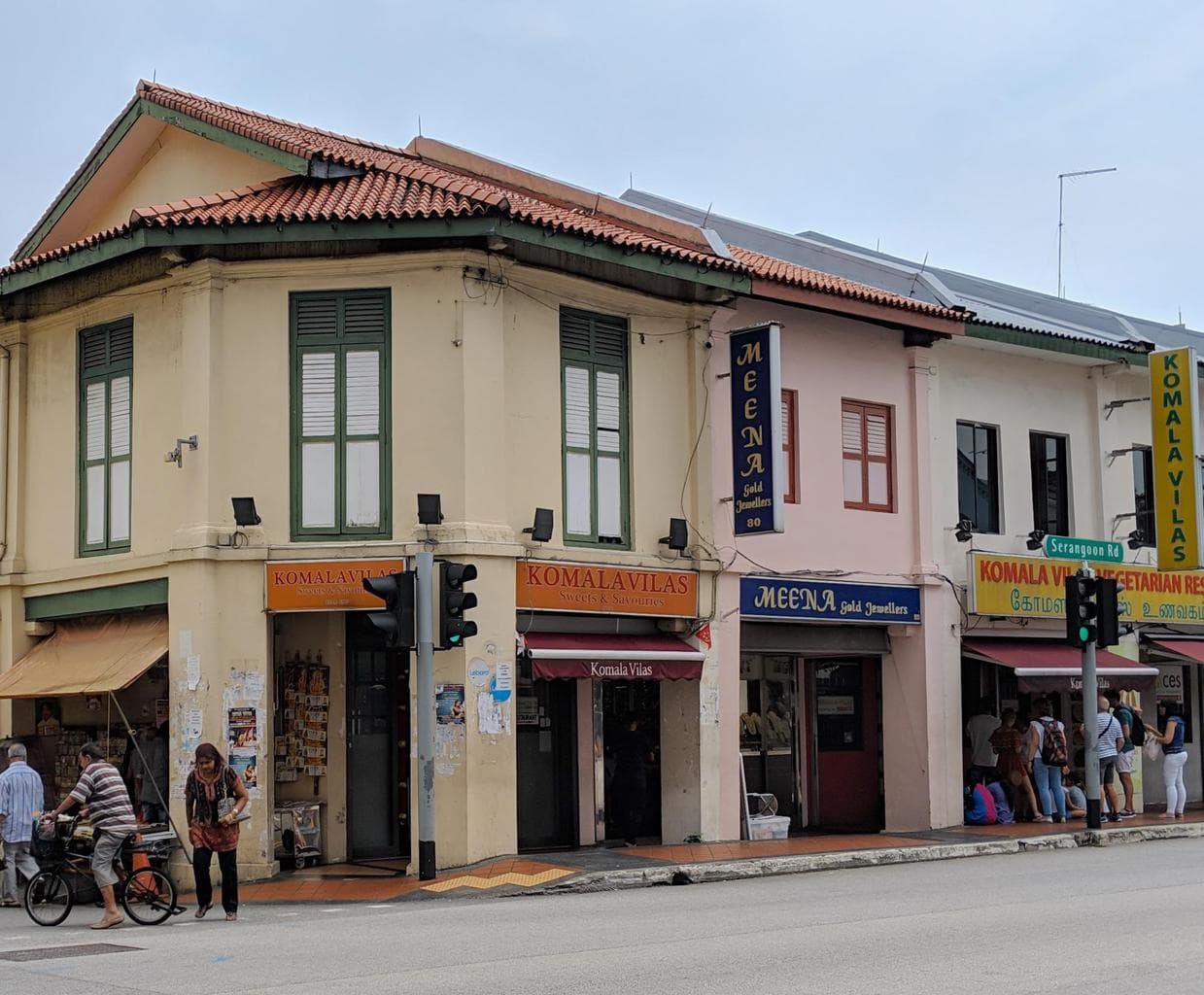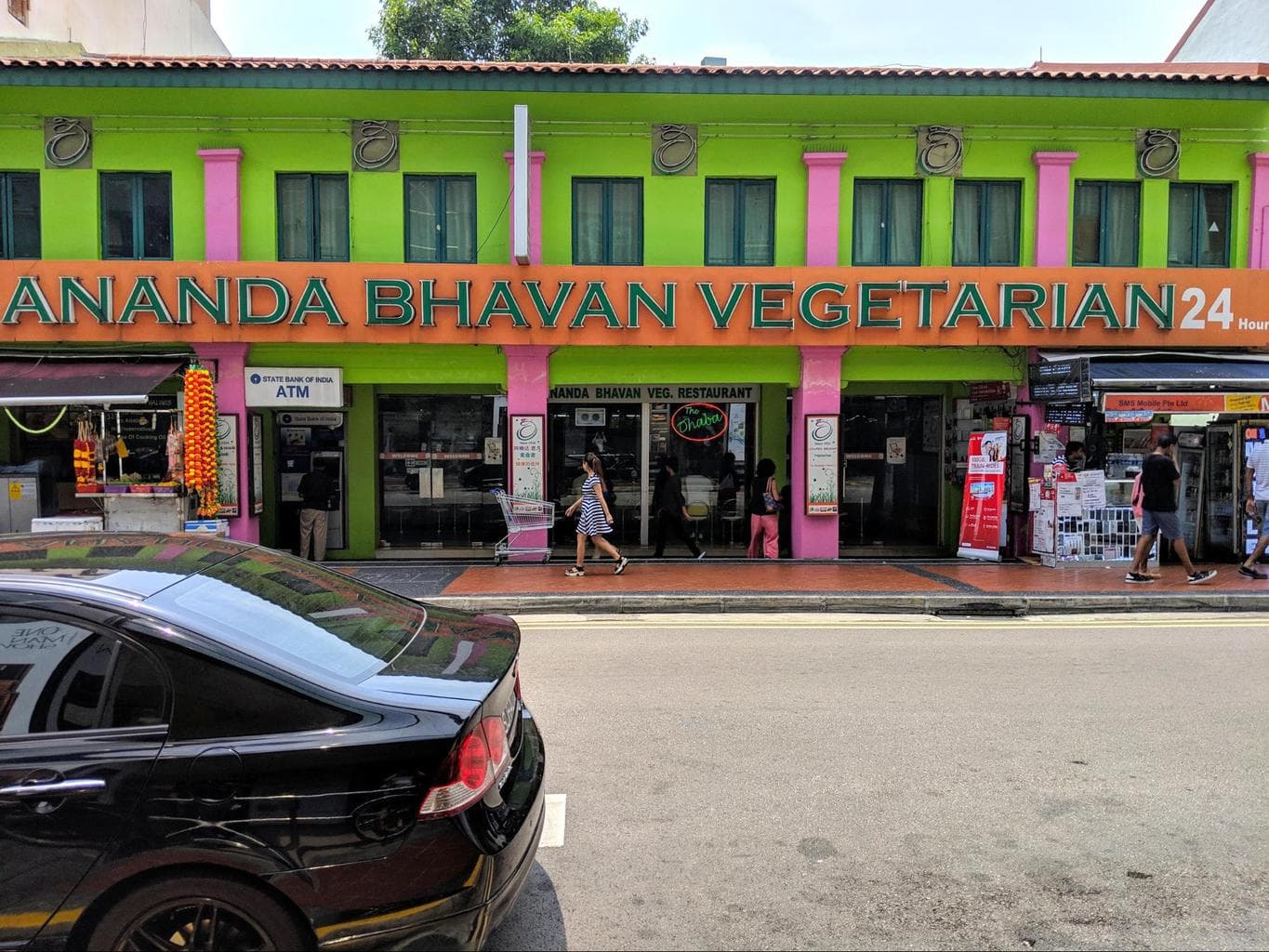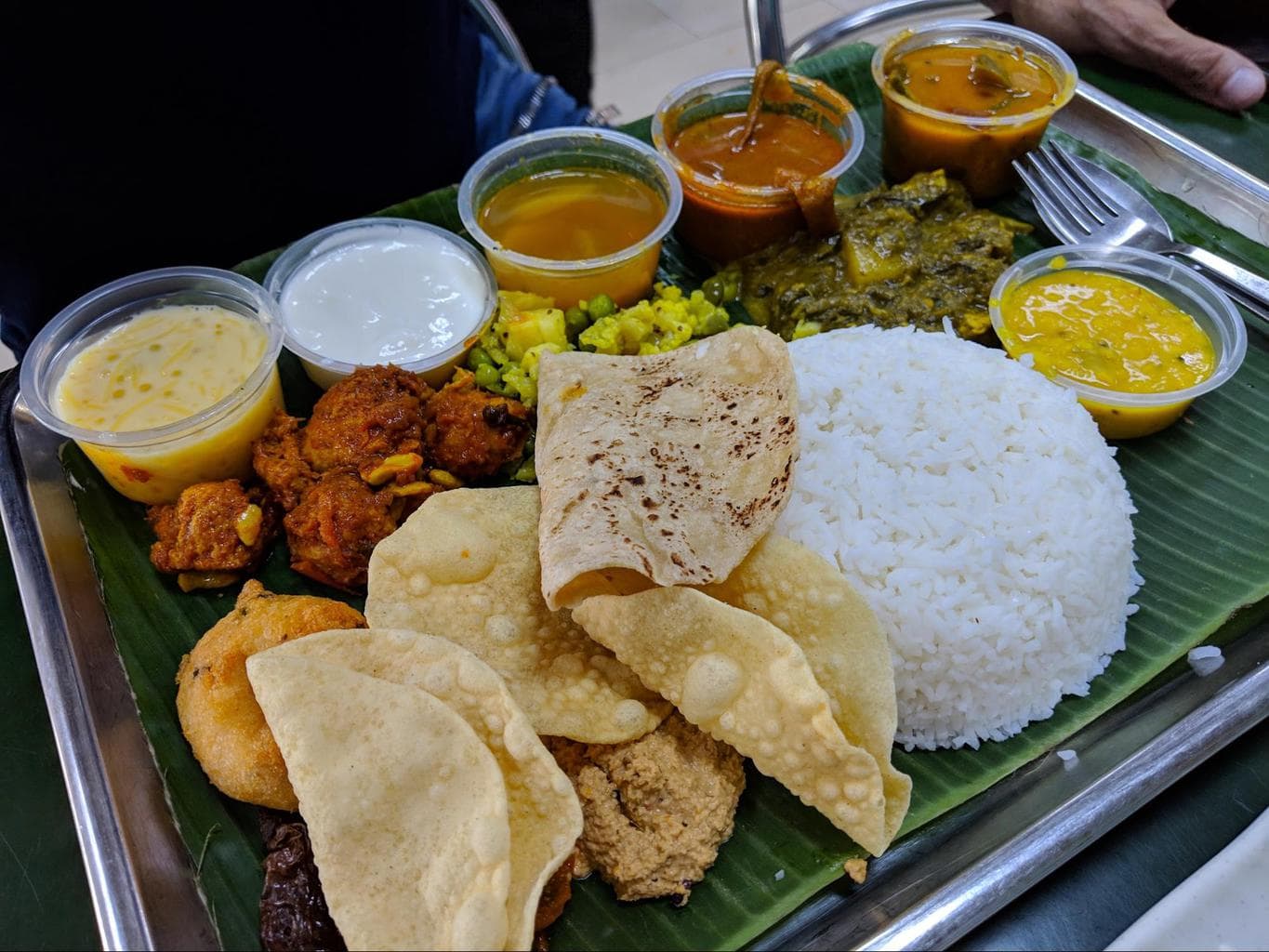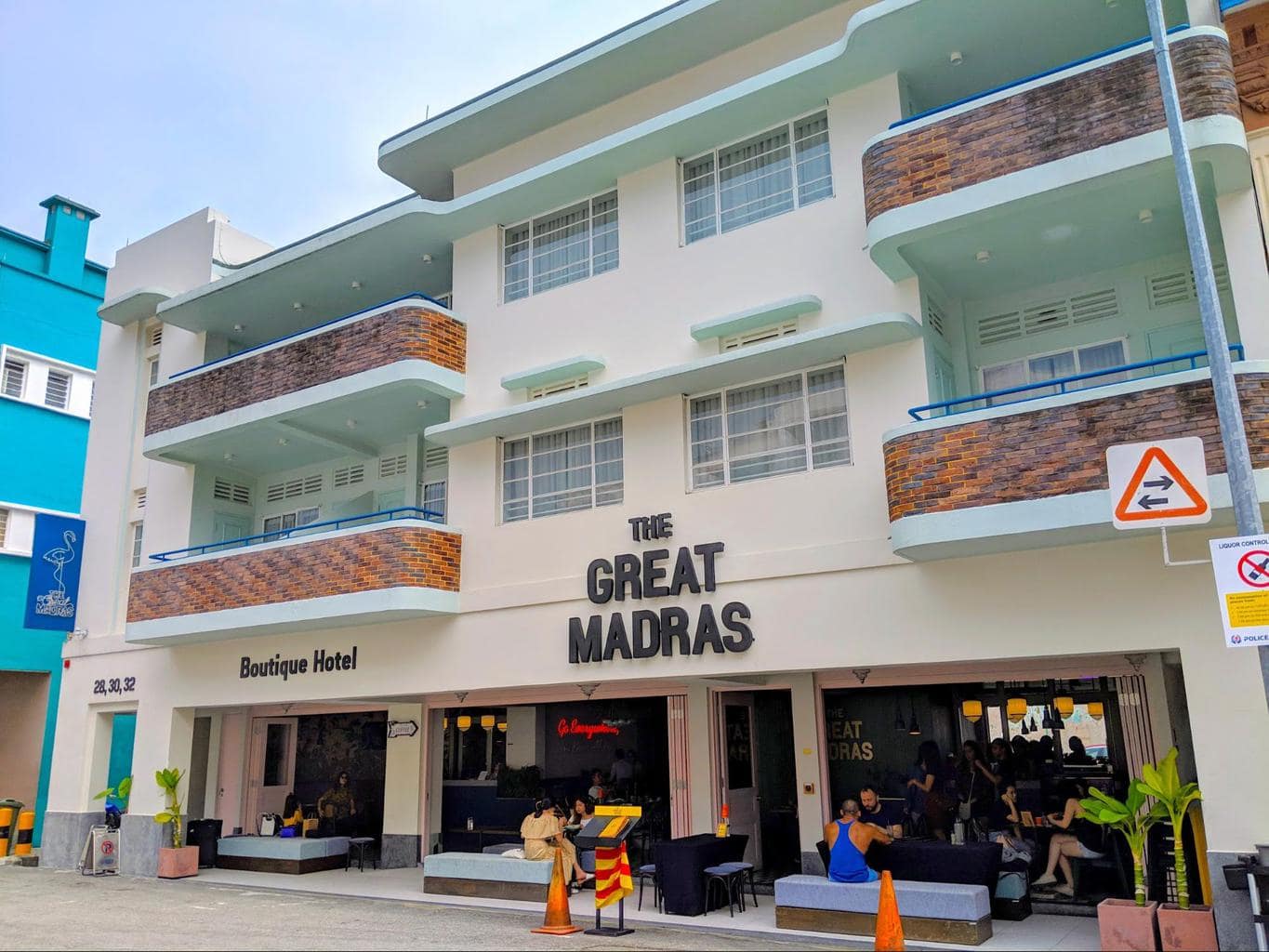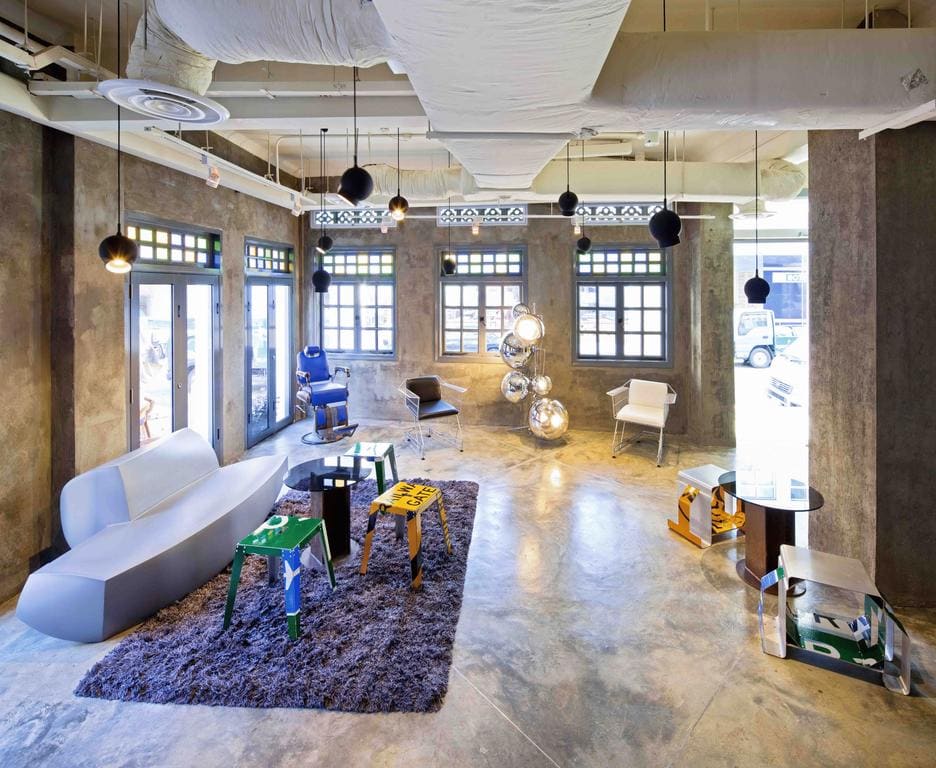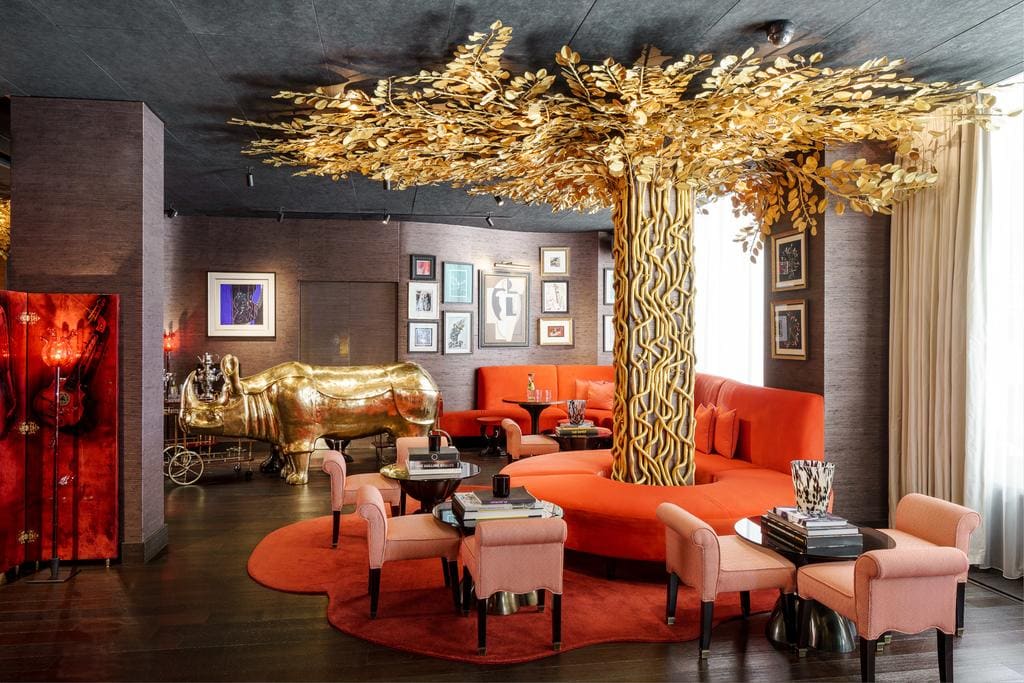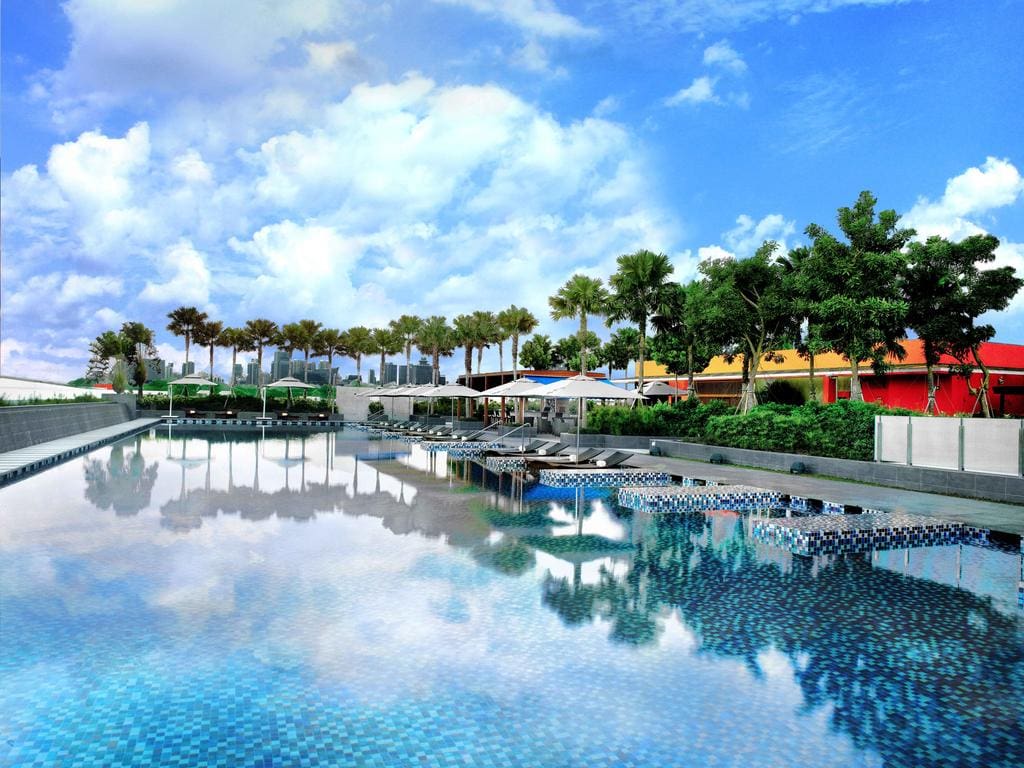This article was first published in January 2019 and updated in June 2020.
While the area may not be home of the most obvious tourist attractions and things to do in Singapore, Little India is one of the most fascinating. Instead of landmarks or monuments, the best things to do in Little India are related to learning more about the fascinating past of the city and one of its largest ethnic groups.
About 7-8% of the population of Singapore are of Indian descent, mostly from the Tamil Nadu state of south India, and are the descendants of the first migrants to arrive in the 19th century.
What to do in Little India today is a mix of historical places of worship, references to remarkable figures, modern day developments and a great opportunity to learn more about the first migrants who helped shape Singapore to what it is today. Of course, there are also great vegetarian restaurants, beautiful temples and preserved buildings.
Because you cannot explore Little India without understanding more about the Indian community in Singapore and how the area developed, before jumping into a comprehensive list of things to do in Little India, read more about its fascinating history and formation.
There are great Singapore staycation deals for hotels near Little India. Read our article on the best Singapore staycations under S$200 to find out more.
The formation of Little India Singapore
Singapore’s Little India is the heart of the south Indian community in Singapore and this is where the large Indian festivals are celebrated, where you can find some of the most important Indian temples and where the best Indian food is made fresh everyday.
Unlike other parts of Singapore, like Chinatown or Kampong Glam, Singapore’s Little India was not the designated location for the Indian community in Sir Stamford Raffles 1823 Town Plan but a neighbourhood created organically. This means that here are a lot of things to see in Singapore Little India that straddle ethnic groups.
But how did it all start for Little India, Singapore? Let’s look at a brief history of the Indian community in Singapore and of the creation of the neighbourhood, two distinct elements of Singapore Little India’s past.
The origins of the Indian community in Singapore
The first members of the Indian community arrived in Singapore as part of the British Empire and were lashkar, an army unit of Indian soldiers from the Bengal Infantry who accompanied Sir Stamford Raffles in 1819 when he came in search of a strategic location away from other European powers, to establish a port.
After those first arrivals, subsequent Indians were prisoners sent by the British government to build the infrastructure that would then set the foundation for the country. They were held at the Bras Basah prison.
Subsequent waves of Indian migrants were colonial subjects who came from the Indian Subcontinent as the city developed and boomed. They were laborers and traders from India who saw the opportunity of a growing part of Asia along with Malay, Chinese and even migrants from the Middle East.
Once the basis for Singapore’s booming port had been set up, businessmen, teachers and civil servants started to arrive to support the growing population. They were coming from many parts of India but the majority arrived from the south and still constitute the largest Indian community in Singapore.
At the beginning Indian migrants established themselves in various parts of Singapore, most notably around Market Street, Chulia Street and, later on, the Serangoon Road area, where today’s Little India Singapore is located.
The history of Singapore’s Little India
Today’s Singapore Little India is found around Serangoon Road, one of the main arteries in Singapore in the 19th century, connecting Singapore’s marshes, pepper plantations and other farm land with the sea port. The road is named after its origins “Saranggong” coming from the Malay for a marsh bird. Other etymology suggests that is comes from the phrase “di-serang dengan gong”, or “to surround with gongs”, referencing the gongs used to scare away animals from the forested area.
The first inhabitants of the Serangoon Road area were farmers and cattle traders who successfully reared water buffalo in the wet marshes and rivers in the area. This trade has left their imprint in street names like Buffalo Street.
Buffalo and other cattle like cows and sheep, were used for their milk and meat, as well as working animals. They also brought related activities such as milk sellers, abattoirs and tanneries which depended on or leveraged the existence of large amounts of cattle. And even symbiotic activities such as those which produced leftovers that could be used as cattle feed, like candy production of pineapple processing.
In parallel, in the 1820s, the British started to set up lime pits and brick kilns along Serangoon Road, where cement and bricks were produced to be used in construction, and many of those first migrants found job opportunities in these businesses.
When other parts of Singapore with Indian enclaves like Chulia Street or Market Street, reached their maximum capacity, Indian settlers started to move to the Serangoon Road area which still had room for growth.
By the middle of the 19th century, there were around 13,000 inhabitants living in Singapore Little India. This growing population meant the need for services to cater to their needs, most notably Hindu temples with South Indian influences, astrologers, garland makers, sari stores, fortune-tellers, goldsmiths and money-lenders.
While cattle rearing and trading was the origin of Singapore Little India, the industry collapsed in 1936 when the government banned the keeping of livestock after several decades of development led to the drainage of the wet marshes and the cattle was seen as a threat to infrastructure development.
WWII destroyed large parts of Singapore and of Little India, but left its main temple, Sri Veeramakaliamman, one of the most beautiful temples in Singapore, unscathed for which many praised the power of the deities. When the war ended, reconstruction began and many of those who fled returned to the country.
With India’s independence from British rule, either Singapore or India were no longer part of the British Empire and both reached independent status. At that point, the Indian community in Singapore had to decide whether to become Singaporean or remain Indian as dual nationality was not allowed.
With independence also came a drive to renovate and clean the country and many of the buildings in Singapore Little India were demolished to give way to better infrastructure. The area was also named Little India by the Singapore Tourism Board in 1980, when the cleaning efforts were well underway and the government decided to recognise the area like Chinatown or Kampong Glam had been.
Some of the best things to see in Little India Singapore date from that period of reconstruction as a lot of the older structures and buildings were destroyed.
Today’s Singapore Little India is very different from the original cattle herding district, but still maintains a strong heritage profile and the opportunity to retrace its history through the many streets and buildings left.
Additionally, recent street art installations and murals have attempted to bring back the scenes and stories of those first settlers displaying moments in their daily lives with colorful happy buffalo, tea drinking and trading.
Things to do in Little India Singapore
Despite being just one of several neighbourhoods in the city, there are a lot of things to do in Singapore Little India.
I spent a few weekends exploring the area with my partner of Indian descent and discovering all the nooks and crannies of the neighbourhood, hearing his and his family’s stories and eating, drinking, smelling and visiting all the tourist attractions in Singapore Little India before finally writing this post which is the labor of love.
If you have been to other parts of South India which comprises Tamil Nadu, Kerala, Karnataka, Telangana, and Andhra Pradesh, you will find a lot of similarities here. Especially in the food and the architecture. But Little India in Singapore also has its own Chinese, British and Malay influence which has given it a very unique character.
Some of the best places to see in Little India Singapore are these fusion spots where Indian and Muslim origins have blended with British colonialism and 20th century Singapore development.
I guarantee you that this is the most comprehensive guide to visiting Singapore Little India there is and I promise to keep it updated. So if you are wondering what to do in Little India Singapore, here you will find everything.
Learn about Singapore’s Indian community at the Indian Heritage Center
This recently opened glass museum at the heart of Little India showcases the heritage of Singaporeans of Indian descent and the origins of the Indian community in the country. It is one of the most interesting places to visit in Singapore’s Little India.
If you start your day exploring Singapore Little India here you will have a good knowledge base to make sense of everything else you will see. Or if you are visiting the country during the Monsoon season, the museum is a good place to retire to when the skies fill with clouds.
The heritage center has temporary exhibitions, guided tours of the special exhibitions and the overall museum and several interactive sections to lean more.
Start the visit with an introductory video in English and Tamil and explore the two floors which follow the first migrants and their evolution chronologically.
A particularly interesting part of the museum are the two interactive screens that tell about the four areas in Singapore where Indian immigrants lived and who and why they lived there. If you are exploring other parts of Singapore, this is a good way to tie it all in.
I found the museum very interesting and spent two hours reading and interacting with every piece. The best part, there were no other visitors in the entire time we were there.
More information about the center here. You can also reserve your ticket online here.
Visit the Sri Veeramakaliamman Temple
We cannot start the list of things to do in Singapore Little India without talking about its most important temple. Located on Serangoon Road, at the heart of Little India and possibly the reason why the area became the center of Indian heritage in Singapore is Sri Veeramakaliamman Temple.
The Temple was one of the first Indian temples to be built in Singapore (the first one is in Chinatown, along North Bridge Road) and the first one in the Serangoon area. It was originally built as a basic shrine by the Tamil workers at the lime pits.
Sri Veeramakaliamman Temple is devoted to Veeramakaliamman, or Kaliamman, Kali the powerful goddess and Destroyer of Evil. The choice of this deity was not random for the early migrants needed to feel secure in the new place.
At the beginning, the temple started small, perhaps just with a shrine, and grew with the donations to expand and add more deities and shrines until reaching today’s size which is also the result of restoration work following WWII Japanese attacks.
As a visitor, you can go in. Remove your shoes and leave them outside and cover your legs and shoulders (men too) with the clothes you can borrow from the entrance. You can take photos, but don’t photograph the devotees, out of respect.
As this is one of the most important centers of Hinduism in Singapore, celebrations for Durga Puja and Diwali are big and a good time to join in the colorful festivals.
More information on the temple can be found here.
The Sakya Muni Buddha Gaya Temple
Continuing with the places of worship in Little India Singapore, one of the most striking temples in Singapore is the 1928 Thai Sakya Muni Buddhist temple which is located along Race Course Road and next to a Chinese temple and in front of another.
The temple started as a very simple temporary shelter for a statue of Buddha that the Venerable Vutthisasara brought to Singapore and it grew with donations from the famous Haw Par Villa/ Tiger Balm brothers.
To fully admire the temple one needs to walk around the street to the back to see the golden dome where the 15m high, 300 tone Buddha is housed.
This temple is often referred to as the 1,000 lights temple because of the many lightbulbs that surround the statue of the seated Buddha inside and it played an interesting role during WWII.
Because Thailand had supported Japan during the war, Japan was friendly to the country and the primarily Thai Sakya Muni temple was spared during the attacks and bombings of Singapore by the Japanese.
Since the British Allied troops realised this privilege, they used the Reverend Vutthisasara to smuggle correspondence out of Singapore through him and the other Thai monks.
One of the most impressive times to visit the temple is on the local public holiday that celebrates Vesak when devotees come to place golden leaves on the smaller Buddha statue.
Leong San See Temple
Leong San See Temple, Dragon Mountain temple in Chinese, is a Buddhist temple located right across from Sakya Muni and it reminded me of Singapore’s oldest temple, Thian Hock Keng, on Telok Ayer Street.
The temple was established by Reverend Chun Wu who arrived in Singapore in 1913 with a statue of the Goddess of Mercy, Guan Yin, and was named after a temple of the same name in Fujian province.
The temple started more as a hospital where the reverend would tend to the sick, and the goddess was placed in the middle hut. With time, the need for a school emerged so the reverend’s disciples built that in the temple grounds. Today, the school is no longer there as it moved to Punggol.
While the temple looks pretty much like it used to, it has been expanded with adjacent halls and renovated through the years. It was the temple’s abbot who, in 1956, requested the government of Singapore give a public holiday for the Buddhist day of Vesak which is still today a public holiday for all residents of Singapore.
Explore the Little India Arcade and Campbell Road
All the streets in Singapore’s Little India are named after important citizens of the 19th century, mostly British, or after the activities that used to take place there, for example, Race Course Road.
One of the most emblematic and relevant streets is in Little India is Campbell Road. Named after the Managing Director of the shipping firm Martin Dyce & Co in the 1870s and a member of the Legislative Council.
Currently the pedestrian street is more than just a road, and flanked on one side by some shops and the Little India Heritage Center and on the other by the Little India Arcade. This is one of the most atmospheric streets in the neighbourhood.
The Little India Arcade is a cluster of Neo-classical buildings painted in salmon and orange colors from 1913. However, today’s center was opened in this form and shape in 1995 to include stores, souvenir shops and eateries.
Don’t miss the opportunity to browse the stores in Little India Arcade and find some truly unusual items such as small clothing for deities, statues of Hindu Gods, beautiful jasmine flower bracelets and garlands and all sorts of decorative items for festivals and celebrations.
Jothi Store, right in front of the Little India Arcade, is one of the oldest businesses in Little India. Starting as a small flower stall in the five foot space under the shophouses facade, the founder expanded the business through the years to today’s five storey store that still sells prayer items, flower garlands, etc.
Street art on Little India
Little India has experienced an artistic revival in recent years thanks to the annual Street Art Walk, which is organised every year and adds to the very vibrant art scene.
This has brought several street murals covering many of the walls and even street installations all through the neighbourhood. It should come as no surprise that one of the nicest things to do in Singapore Little India is go on a street art hunt across the neighbourhood. And if you are around during the annual event, join a walking tour to learn more from close up.
Here are some of my favorite street art pieces to look out for in Little India.
This is one of my most favorite street murals in Little India. It is colorful, it has movement and it expresses something. It also gets you closer to the painting as it is at ground level.
The work is located on Dickson Road and is by Didier Jaba Mathieu who is also the painter of the famous Mayan inspired mural on Mexican restaurant Piedra Negra, located on Haji Lane.
Like that one, his work in Little India is as bright as it gets, and it showcases three Indian dancers in traditional dance moves. The mural is hidden on the wall behind the 5 foot walk of a shophouse so it is a bit hard to photograph, but well worth looking for.
This mural by Shah Rizzal represents the neighbourhood not in an abstract way but in an actual manner. You can find the buildings drawn here around Little India and look out for the dotted areas which are meant to leave space for new things to come, quite suitable to a neighbourhood that is in constant flow of modernization.
Another of my favorite is this mural by Eunice Lim that was presented in Art Walk 2017. The mural reflects the area in which it is in, Kerbau Road, translated as Buffalo Road, the former center of the cattle herding in Singapore, and depicts some happy and colorful buffalo.
There used to be a similar mural next to it but this one disappeared. The mural can be found behind the MRT underground entrance so it is easy to spot.
Note that some of the murals are painted over during the annual Art Walk, I will keep checking them annually so that this article is up to date.
Learn more about shophouse architecture
Little India is one of the neighbourhoods in Singapore where you can learn more about the evolution of shophouse architecture from the 1840s to the 20th century.
Through the many buildings in the neighbourhood that are still preserved, you can see examples of the early style shophouse architecture of the 1840s and how it evolved all the way until the modern style of the 1950-60s.
Look out for these buildings:
- Early style – 60 Buffalo Street
- First transitional shophouse style – 39 Campbell Lane
- Late shophouse style – 47 Desker Road
- Second transitional shophouse style – 23 Cuff Road
- Art Deco style – 35 Cuff Road
- Modern style – 74 Serangoon Road
See how each of them evolved from the simpler shophouses of the 19th century with minimal decorative elements, square windows and no shutters to the modern facades of recent decades. The Art Deco style also left a mark in Singapore with an expression more tied to the local colonial and Chinese influence.
Go on a food tour
One of the best ways to experience the soul of a place is through its food. Here is where the area’s heritage thrives and where its past comes alive in smells and flavors.
One of my favorite activities in Little India Singapore is eating, especially all the famous South Indian dishes like paratha, dosa or the like. Some of Singapore’s oldest Indian restaurants are located here and they are steeped in history. Expect casual eateries filled with local Indian families tucking into authentic Indian food.
If you want to learn more about it, there are a couple of food tours I highly recommend. One option that takes you through three different neighbourhoods in Singapore, I would recommend taking this food tour with GetYourGuide. You will start off in the Malay Village, then on to Chinatown and finally to Little India. It’s a great tour for foodies who have time and large tummies to hold all the food. You will also get to make your own rojak, a traditional meat, fish or vegetable dish.
Apart from food, there are other tours of the area like a laid back trishaw tour with an uncle who grew up and lives in Little India, or a 2-hour walking tour
with an expert local guide.
And if you find yourself in need of more amazing things to see in Little India, then don’t forget to save our choice of free walking tours in Singapore.
Visit the Tekka Market
Singapore Little India has one of the most colorful wet markets in the country. A wet market is nothing more than a fresh food market which is called wet because the floors tend to be wet from the water used to clean them.
There are many wet markets in Singapore most notably in Chinatown and Little India but also in other neighbourhoods. When I moved to Singapore I used to love going there, everything is so colorful and neatly organised.
But I soon realised that as a foreigner, the aunties in the Chinatown wet market were charging me more and the romance soon faded. It was also far cheaper for me to order online and get it delivered than to lug the groceries around in hot and humid Singapore.
Nonetheless, a visit to Tekka Market is a must as this is one of the liveliest and most fascinating places in Little India.
Tekka Market was built in 1915 and used to be called Kandang Merbau Market in Malay because of the buffalo enclosures in the area while the Chinese used to refer to it as Teh Kah for the bamboo.
The market was demolished in 1980 and the stalls were moved to the current location. While the official name given then was Zhujiao Market, the traditional Chinese name was brought back by popular demand and everyone refers to it as Tekka Market today.
The market was originally famous for its fresh meat, Little India being an enclave for cattle traders, and is a great place to find fresh vegetables, fruits and herbs. Especially those needed to cook Indian dishes, like freshly grated coconut, cardamom, all types of banana and plantain, banana leaves, etc.
Get lost in Mustafa Centre
Mustafa is one of the most fascinating places to see in Singapore’s Little India. It is a part supermarket, part department store, park electronics store, part gold center all spread over several maze-like floors in various adjacent buildings that are open 24h and permanently busy.
The department store started in 1952 when its founders arrived from Uttar Pradesh to Singapore. The family’s enterprising ventures took them from a humble food stall to today’s sprawling Mustafa Center.
This is where you can come to buy the oddest and most unique things, and also the most basic ones. Food is incredibly cheap, and usually sold in wholesale amounts, like a kilogram of almonds, or a kilogram of Nutella. Mustafa is one of the most incredible tourist attractions in Little India, even if not aimed at tourists.
On the basement floor there is an electronics store that sells anything at very cheap prices. Get a toaster for S$20 or a Hello Kitty sandwich maker for S$25. Mustafa is also famous for its gold section where you can buy gold jewelry practically by the kilo. Rumours say that this is the underground money laundering machine, buying gold from India as a means to bring cash into the country. As you can see, this is one of the most enlightening places to see in Singapore’s Little India.
There are also a host of weird and wonderful items that I have unearthed through the years. A fake hand to hold your rings? You got it. A bunch of fake flowers? Any kind, size and color you can think of. Do you want a fake Madonna wig? They have it.
Perusing the jam packed corridors, stocked with stuff from floor to ceiling and trying to squeeze your way through the narrow spaces while an entire Indian family drags stroller, children and trolley filled to the top is an experience in itself.
Mustafa is an institution and is a bit like Las Vegas, you go in but never know when or with what you will come out. Here’s our complete guide to the Mustafa Centre.
Join one of the important festivals: Deepavali or Pongal
Little India comes alive during certain times of the year when there are festivities and the streets are lit, decorated and buzzing with people.
There are three times when this happens: Deepavali (also called Diwali in India) which happens in October/November, Pongal which is usually January/February and Thaipusam which is also usually in January.
If you happen to be around Singapore during those festivals, heading to Little India is a must.
Kampong Kapor Methodist Church
The church has humble beginnings with a small group of 10 Malay speaking Chinese congregating at the house of an Australian female Methodist missionary.
Today’s church started to be built in 1929 with various donations from the community and the family of the church’s bishop who died in 1924 and it quickly became the second largest Methodist church in Singapore.
The current Art Deco building dates from the 1980s when it finally reopened after almost two decades of reconstruction. The church offers services in English, Tamil, Malay and Peranakan and has missions in various countries across the world.
Mahatma Gandhi Memorial Hall
The Mahatma Gandhi Memorial Hall was built after the death of Gandhi to honor his work. The idea started as a small memorial which then expanded into several buildings and even a library as a response to the public’s donations and proposals. The building’s foundations were first laid out in 1950 by the then Indian prime Minister Jawaharlal Nehru.
For some time, SINDA, the Indian community association, occupied the buildings which held annual memorial services in honor of Gandhi on the anniversary of his death.
The building was renovated in 2011 and is now occupied by the Hindi Society but its most interesting aspect is the Library which is filled with books about the life and work of Gandhi in several languages.
More info here.
Angullia Mosque
This mosque, currently under renovation, was named after a famous Gujarati Muslim trader who became wealthy through the trading of spices, sugar, timber and other items. The family started to accumulate wealth and acquire properties across Singapore.
There are other Angullia mosques in Singapore but the one in Little India was the first one. Built in 1892, the only part standing from the original mosque was one of the side entrances. The current mosque dates from 1970, after the previous one was demolished following Singapore’s modernisation efforts.
Angullia Mosque still belongs to the family who are the custodians on behalf of the Muslim community. More information can be found here.
Sri Srinivasa Perumal Temple
Sri Srinivasa Perumal Temple was built between 1855 and 1885 on land that was previously owned by the East India Company. The temple was the idea of a group of Indian residents who wanted a Hindu temple devoted to Narasinga, a Vishnu avatar.
The temple was expanded in 1914 at the request of the Chettiar community who brought some idols from India. Originally, the temple had a pond fed by the Rochor River but this was covered later for environmental reasons.
The temple was renovated again in the 1950s with more ornaments and paintings. A wedding hall was built in 1965 and financed by a famous local businessman, P. Govindasamy Pillai (PGP). After it was finished, the temple was renamed to Sri Srinivasa Perumal Temple and the divinity changed to Sri Srinivasa, translated as source of light or abode of prosperity.
The temple is pretty large inside with several shrines and sanctuaries and it is a very popular religious landmark in Little India and Singapore. It is also the temple where the famed Thaipusam festival is celebrated, one of the gruelling yet incredible things to see in Little India.
Photograph the most colorful house in Singapore Tan Teng Niah
The house of Tan Teng Niah is often quoted as the most colorful house in Singapore, and one of the most popular attractions in Little India. The photogenic and eye-catchy house is the former residence of a wealthy Chinese trader, and it was not originally painted in such bright colors but in white and green.
Tan Teng Niah was a famous businessman in Little India at the beginning of the 20th century. His business in the manufacturing of sweets, was well placed in the Little India of the time, where buffalo could transport the heavy canes and the leftover fiber product could be used in the smokehouse nearby as fuel to dry rubber or as cattle feed.
What remains today is probably part of the factory and smokehouse and one of the last remaining Chinese villas in Little India, although it is today occupied by a commercial business.
The house had eight rooms and a facade over a five foot way. The side gates used to be for carriages and there is an inscription over the main gate that reads “refined pine” in Chinese, which means endurance and it is believed that this referred to his wife. Definitely one of the top Instagrammable places in Singapore.
Shree Lakshminarayan Temple
This temple looks like anything but a temple and, after passing by it several times, I never noticed it was one until I followed the Little India Singapore heritage trail.
Shree Lakshminarayan Temple is a three storey red and white building with a dome at the top which was the first North Indian temple in Singapore. The temple’s name is the combination of two deities: Lakshmi and Narayan, or Vishnu goddess of wealth and protector of the universe.
The temple was built with a donation from the North Indian community and took 9 years to complete finally opening its doors in 1969.
Learn about Islam at Abdul Gafoor Mosque
Abdul Gafoor Mosque is perhaps the most underrated attraction in Singapore’s Little India. The mosque was named after Shaik Abdul Gafoor bin Shaik Hyder, Dunlop Mosque’s trustee. Dunlop Mosque was a smaller wooden mosque in the area which was replaced by Abdul Gafoor. Although the mosque was not originally named after him, when he died in 1917, the name was changed in his honor.
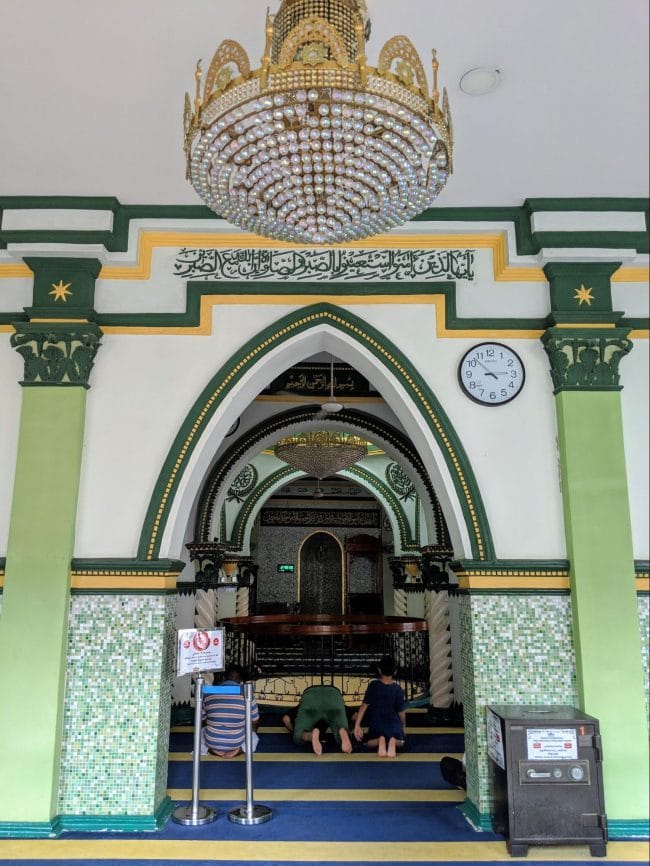
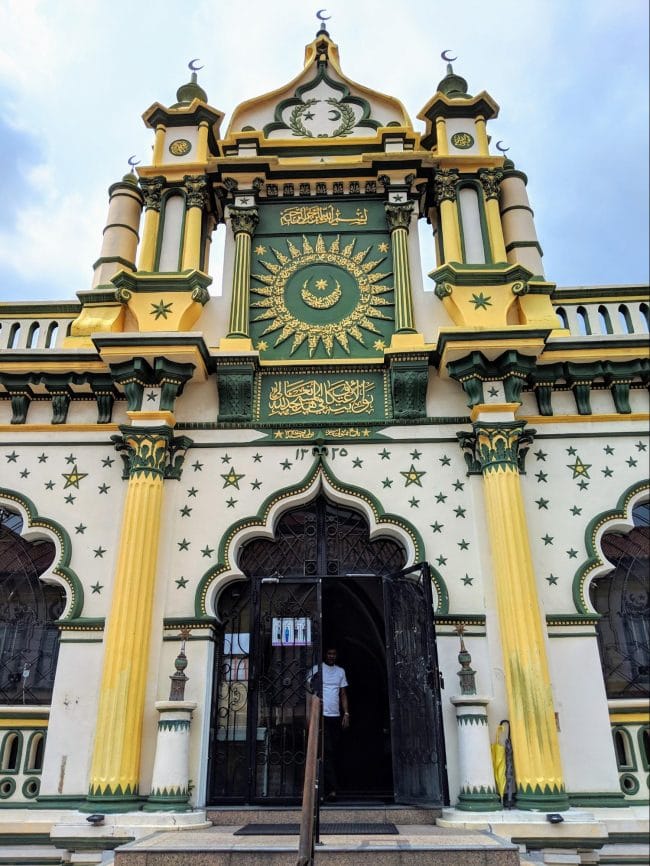
This is one of the most intricate mosques I have ever seen and a popular religious temple for the Tamil and Baweanese workers who used to live in Little India at the beginning of the 20th century. As a tourist, it is also one of the nicest places to see in Little India, not least because the building is beautiful but also because it tells more about the Muslim community in the country.
Abdul Gafoor is also one of the oldest mosques in Singapore and has been renovated several times and it was one of the first temples to have electricity. The architectural design reflects Saracenic and Neoclassical elements and the facade has a beautiful sundial and several half crescent shapes.
Visitors can go in but you need to take your shoes off by the entrance and wear one of the robes available if your legs or shoulders are uncovered. Do not photograph people praying and you can’t walk into the carpeted area.
If you are lucky, one of the mosques care takers will offer to walk you around the mosque and tell you more about Islam. There are also books about Islam and the Quran in English and other languages to take away for free.
Church of the True Light
This Anglican church at the back of Campbell Road was finished in 1952 after a decade of fundraising halted by the Japanese occupation.
The church originally started in a barber shop in Bencoolen, where a British missionary decided to organise a congregation for the Heng Hua and Hock Chew Chinese from Fujian.
Through the years, the group held gospel meetings in several locations which it kept outgrowing, until it acquired land in its current location in 1940. Because the majority of the members were from the poorest social groups, financing of the building construction took time.
Rex Cinema
If you are wondering what to do on an evening out in Little India, have you considered a fun, light hearted movie?
One of the most entertaining things to do in Little India Singapore is watching a movie at the historical Rex Cinema. The cinema opened in 1946 on the former premises of the Singapore Boxing Club and screens Tamil and Hindi movies to a primarily local clientele. Here are some of the best movies about India to get you inspired.
Through the decades, it has become one of the most important cultural landmarks among the Indian community in Singapore and still remains an authentic and fun experience.
Best restaurants in Little India Singapore
The best food in Singapore’s Little India is vegetarian and from the South of India, with a few exceptions. This is because it’s the favorite of the residents whose heritage is rooted in this tradition.
What is also interesting is that, despite Singapore having fully embraced the specialty coffee and hipster revolution, Little India has remained largely unchanged and there are very few Western restaurants and even less hipster cafes.
If you plan to spend a day in the area, you should make sure to fully immerse yourself and try its South Indian vegetarian restaurants most of which are real institutions in the country.
There is no doubt that eating is one of the best things to do in little India and one of the most insightful ways to learn more for the buildings and older structures may have been renovated and changed, but the food has remained the essence of the neighbourhood.
Have a dosa at a Bangalore institution
Dosas are an eminently south Indian food most popular of Kerala, Karnataka and Tamil Nadu states. Since most of Singapore’s Indian community are of south Indian descend, it should come as no surprise that dosa are common in many menus in Little India in Singapore.
One of the most famous and popular places to have a dosa is Mavalli Tiffin Room, or MTR, an outpost of Bangalore based dosa institution located on Serangoon Road. Come anytime and you will always find it full.
On the menu a vast array of vegetarian options from idlis to dhal (lentil) and various types of dosa which here are the fluffy but crunchy type, what makes MTR dosa so unique. The specialty here are not only the dosa but also the vada idli, famous in Bangalore as an alternative when rice was scarce as they are made with semolina.
My favorite are the masala dosa and the curd rice. Wash it all down with mango lassi or a masala tea, or both.
Mavalli Tiffin Room is a breakfast, lunch and dinner place. The restaurant closes between lunch and dinner.
Eat with your hands at The Banana Leaf Apolo
The Banana Leaf Apolo is a Singapore and Little India institution. Since 1974 the restaurant has been serving mostly south Indian but also some north Indian food on a banana leaf which you must eat with your hands.
The most famous dishes at The Banana Leaf Apolo are the fish head curry and the chicken tikka masala both of which are really hot.
Their specialty is spicy food, and there is no way around that so if you can’t eat spicy then you should probably avoid the restaurant as they can’t really make food less spicy.
The restaurant also delivers and you can do take away too. There are two outlets, one on Race Course Road and one at the Little India Arcade.
The Banana Leaf Apolo is a lunch and dinner place. To book or order check their website here.
Eat on the floor of Komala Villas
Komala Villas is another traditional restaurant with floor seating on cushions, banana leaves and eating with your hands which opened in 1946. The current owner bought the restaurant he worked at when the previous owner retired, and renamed it Komala Villas.
The food at Komala Villas is also traditionally South Indian and vegetarian with items such as dosa, uttapam or vadas, but also has North Indian options with naan, rice and lentils in gravy.
The first outlet of Komala Villas is also located along Serangoon Road and split over two levels but there are also outposts in the other two main streets in Little India, Race Course Road and Buffalo Road and a sweets store on Serangoon Road. Come to Serangoon and Race Course Road for breakfast, lunch and dinner.
Enjoy a vegan feast at Kailash Parbat
Kailash Parbat is one of the first restaurants I ever dined at in Little India. It is also a vegetarian restaurant with a large sweet selection and a long menu of street food items and chaat, like puris or samosas, and other snacks enjoyed at tea time.
The food here is mostly North Indian and Punjabi owing to its origins. Kailash Parbat was founded by a Pakistani immigrant to India post-partition who started with a pani puri stall in Mumbai and has grown to an Indian restaurant chain with outposts in the US, Singapore, Hong Kong, Australia, UK and India.
The menu here is expansive and its vegan choices are many. I particularly like the pani puri as this is one of the few places you can have them in Singapore. The place is popular with families and is a bit more elegant than the other more casual options on the list.
Kailash Parbat is a lunch, tea time and dinner place. More information here.
Ananda Bhavan
Whenever I want to have a dosa, I prefer to go to MTR but my partner wanted to come to Ananda Bhavan which for him is a childhood memory as his family is vegetarian. The restaurant opened in 1924 and is therefore the oldest Indian vegetarian restaurant in Singapore.
The original Ananda Bhavan location was closed down in 2018 because of the ongoing infrastructure development in Singapore but there are five other outlets in Little India. The most atmospheric one is the one in front of Mustafa Center.
Set inside a bare shop with an always buzzing clientele, this is where you can order your favorite North and South Indian vegetarian food and feel the closest to the streets of India.
The place is simple with plastic tables, chairs and plates and often shared tables, but the service is fast and the food comes quickly to your table. You will be able to order dosa or also thali with lentils, potato curry, rice, papadom, chapati, chutneys and other curry served on a tray but on top of a banana leaf. If you are fed up with Indian food, they also serve burgers and fries here.
Ananda Bhavan is a breakfast, lunch and dinner place and one of the outlets is open 24h. More information here.
Meat Smith
This cozy and casual three-storey craft bar, Indian-inspired meat restaurant located in front of the Indian Heritage Center is one of the few Western food alternatives in Little India and a great place to come enjoy amazing marinated pork ribs.
The food menu is concise but every dish is a win, and the drinks are unique. If you don’t know what you feel like, the very friendly bartender will be happy to concoct something just for you based on what you are feeling like.
Munch delicious dim sum
Those seeking something different from Indian and Western dishes should head out to one of the popular dim sum restaurants in Little India Singapore. Swee Choon Tim Sum Restaurant should be your first choice as it’s an institution for the finger food. Opening its doors in 1962, this always busy eatery shares popularity with Taiwanese chain Din Tai Fung. Their specialities include Mee Sua Kueh, a deep-fried vermicelli cake, and the Big Pau, a Chinese bun filled with minced pork, a piece of chicken, egg and half a shitake mushroom.
Another popular Little India restaurant for dim sum is newer Dim Sum Haus in Jalan Besar. The salted egg crusted bun is a must try. Both restaurants are always busy and completely packed, so it’s best to arrive early to avoid the queues. You can also always get a takeaway after your Little India heritage tour and eat it somewhere else if you can’t stand the line.
Best hotels in Little India, Singapore
Just as there are not a lot of successful Western restaurants and cafes in Little India, there aren’t many Western chain or business hotels, or hotels altogether, in the area. The majority of the accommodation options are smaller boutique hotels.
Little India is a primarily local and residential area with very few non-Indian expats living here and even fewer tourists staying in the area. However, there are a couple of great hotels in Singapore’s Little India worth mentioning.
The Great Madras
The Great Madras is a 34-room new boutique hostel-hotel which opened in 2018 very near Campbell Road and the Little India Arcade. This is as close as it gets to the action on Little India.
The building design is the same as the Art Deco architecture found in Tiong Bahru airplane buildings with an undulating facade and square windows.
Inside, the decor follows the Art Deco style with neon light, splashes of color and vintage furniture. There are several funky elements like the moongate by the pool or the neon flamingos, and coliving spaces with semi-private rooms. The Great Madras is a friendly and casual hotel.
Room rates start at S$100 per night. Book now on Booking.com | Agoda
Wanderlust Hotel
The Wanderlust Hotel has been a Little India institution since it opened with its themed rooms, its hip restaurant and its overall fun and funky approach in a heritage building by the hands of Singapore’s Unlisted Collection which still manages but no longer owns the hotel.
The hotel’s building is historical in itself, having opened for the first time in 1920 as a Heng Hua school, and the Art Deco tiles on the facade earned it a conservation status.
The 4 star hotel is unique in its 29 room design, each envisioned by one of four local design agencies who were given full creative control to come up with a never seen before theme for the rooms in each one of the floors. There is a monster room with creatures providing company to guests and a black and white theme. No two rooms are the same.
Room rates start at S$200 per night. Book now on Booking.com | Agoda
The Vagabond Club
The Vagabond Club now a Marriott group Tribute Portfolio hotel, is a sexy 5 star boutique hotel on the edge of Little India housed in a grey and red Art Deco building. This is Little India’s most exclusive hotel and one of Singapore’s best boutique hotels.
With lots of gold, velvet, art pieces and a members whiskey library also accessible to guests and the public and with one of the largest collections in the world, the hotel has evolved into a naughty destination for those looking for a hotel with character.
The decor here is Parisien vintage meets Chinese elegance and each of the 41 rooms is unique. There is no denying that the hotel has character, as does the successful real estate husband and wife team.
Room rates start at S$325 per night. Book now on Booking.com | Agoda
One Farrer Hotel
One Farrer is a hotel and resort complex in Little India and the only international, business-like, modern hotel in the neighbourhood.
The complex sprawls 20 levels and is split over three accommodation options including villas and apartments. The area is so large that there is even a farm, several gardens, many restaurants (one open 24h), shops, a modern private hospital and 700 art pieces from Asia. The hotel’s olympic sized pool is one of the most impressive rooftop hotel pools in Singapore.
Room rates start at S$260 per night. Book now on Booking.com | Agoda
Pin this to your Singapore board!
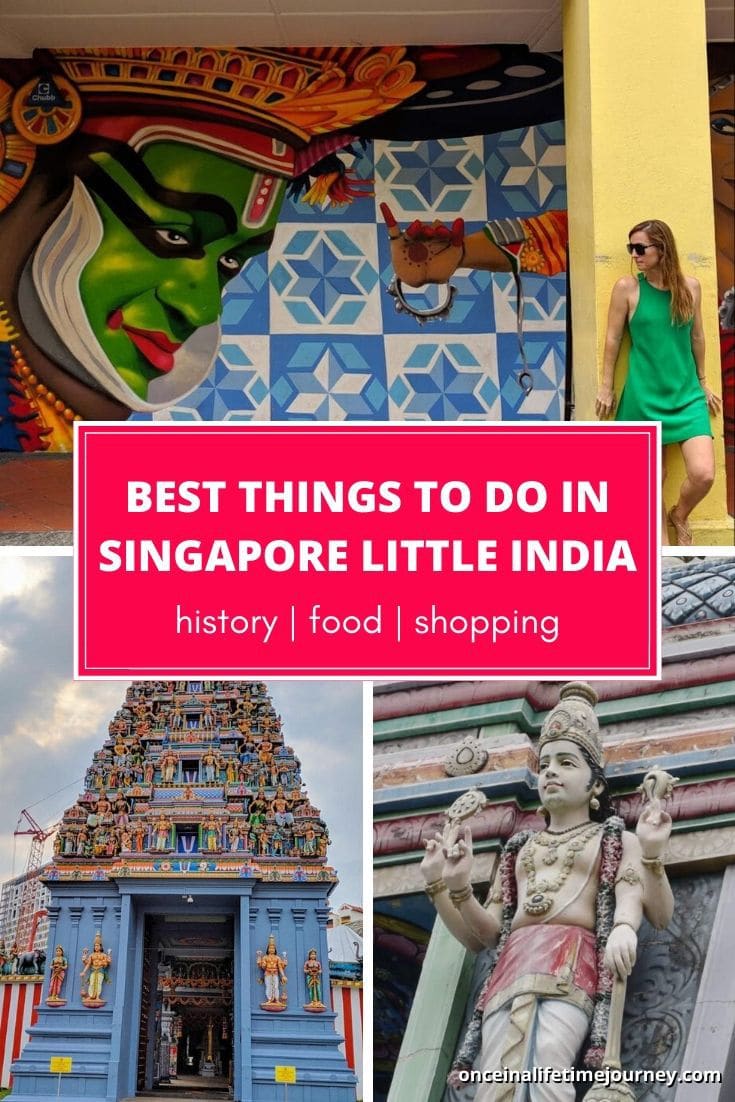
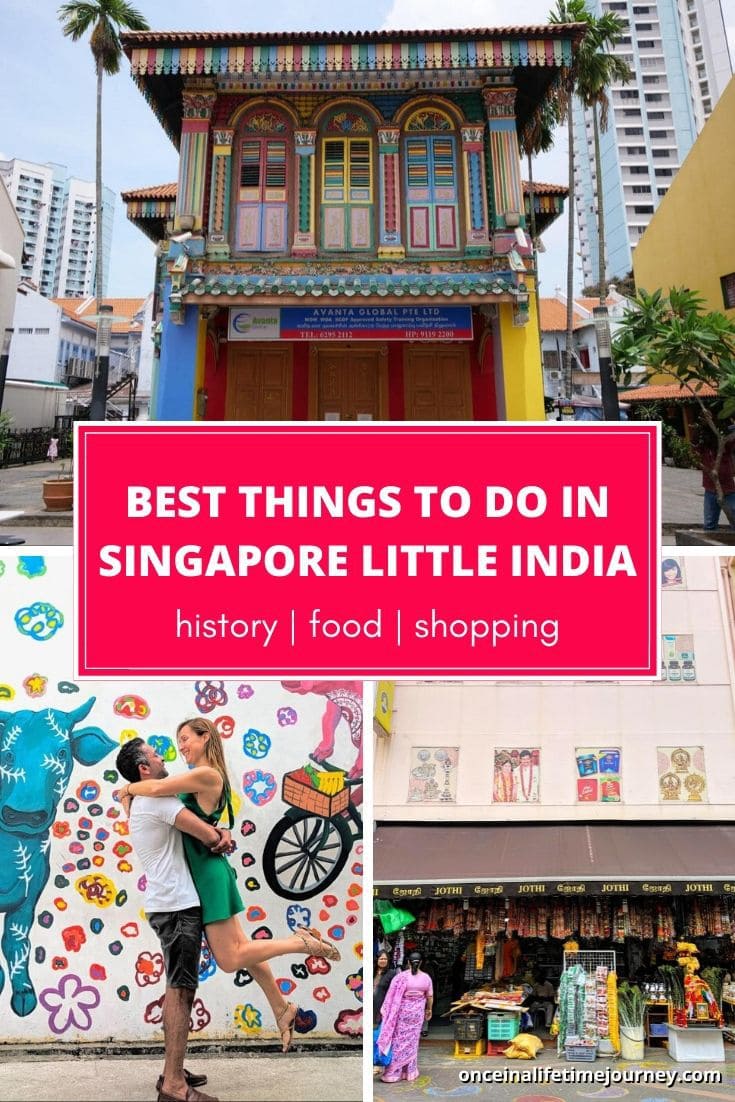
- Check if you need a visa, get help processing it at iVisa.
- Never ever leave without travel insurance. Get affordable coverage from World Nomads or long term insurance from Safety Wing.
- I find all of my flights on KAYAK. Check their Deals section too.
- Search for all your transportation between destinations on the trusted travel booking platform Bookaway.
- I book all my day trips and tours via GetYourGuide, they are the best and their tours are refundable up to 24h in advance.
- Get USD35 off your first booking with Airbnb.
- Compare hotels EVERYWHERE at HotelsCombined and book with Booking.com.
- Compare car rental prices at Rentalcars.com


